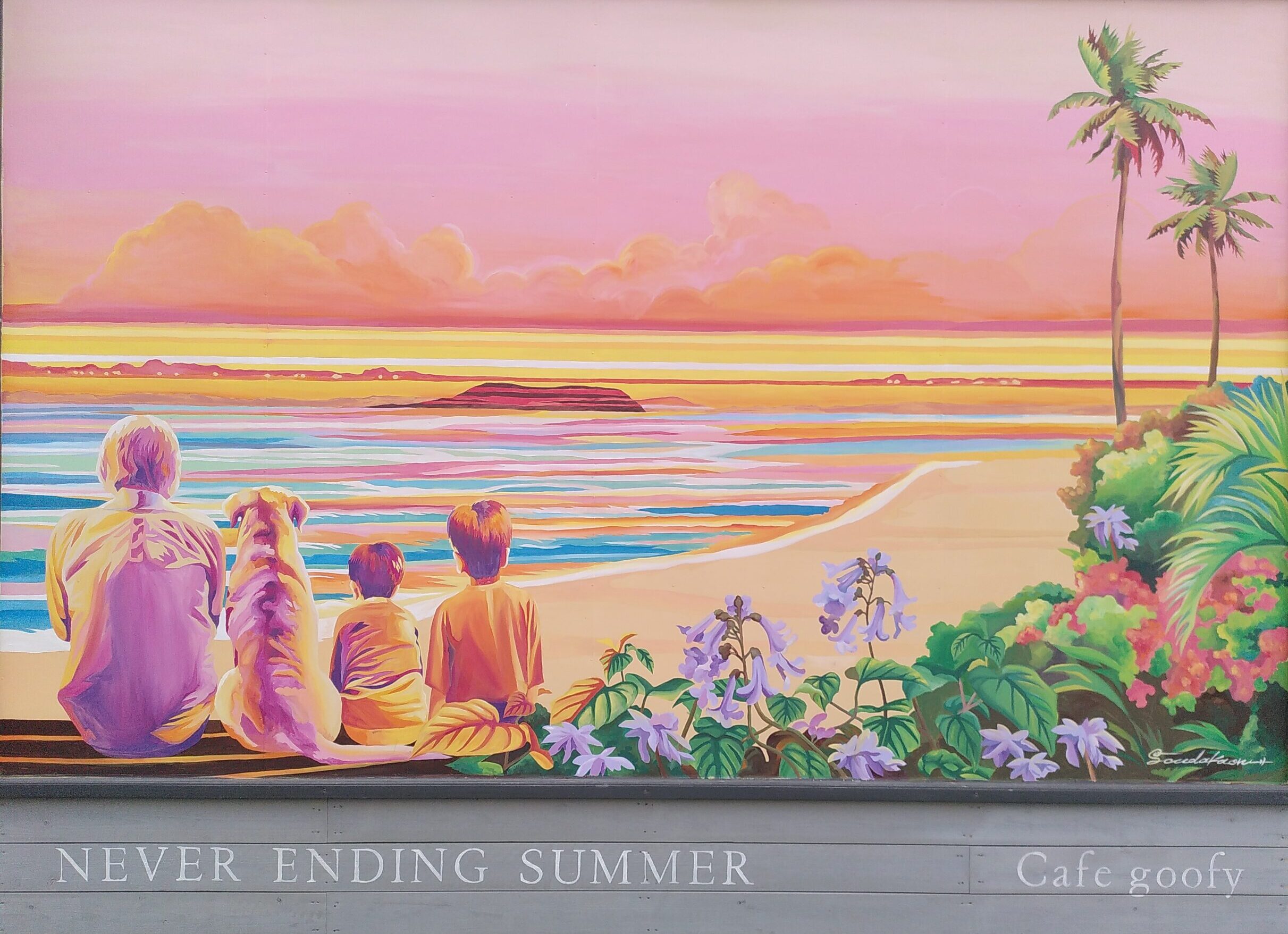NEVER ENDING SUMMER or maybe NEVER ENDING JAPAN is the Motto and the big question of this years second half, from August on. The phrase is also a beautifully drawn picture at my beloved beach cafe called “Cafe goofy” in Nishihazu, Aichi, where I am still mainly based in Japan and working with Koji.
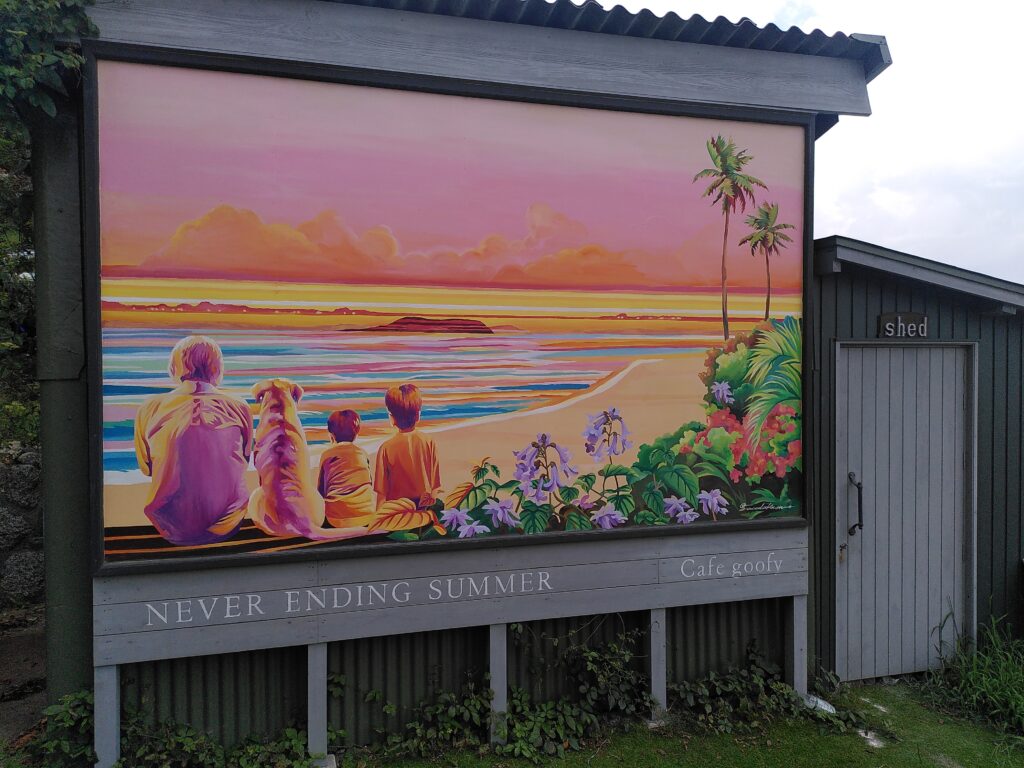

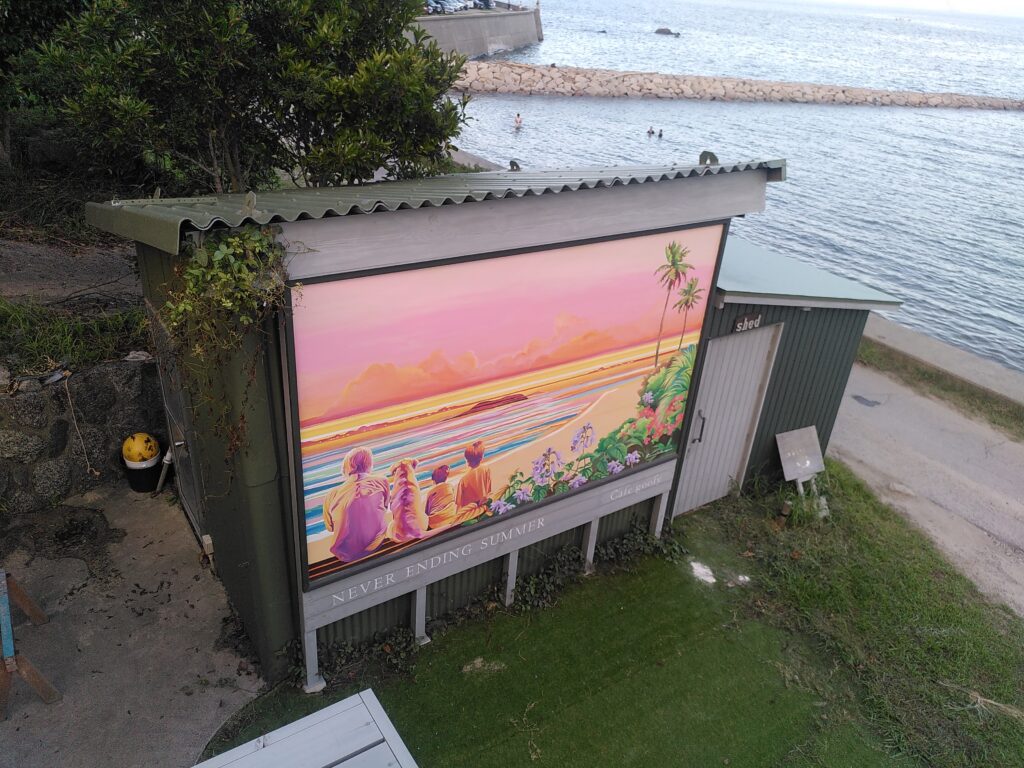

The cafe is a lovely place with a wonderful view, it’s located in an area which goes by the name of “Waikiki Beach” and gives you instantly the feeling of holidays when you sit there, zip a drink and glance into the horizon.
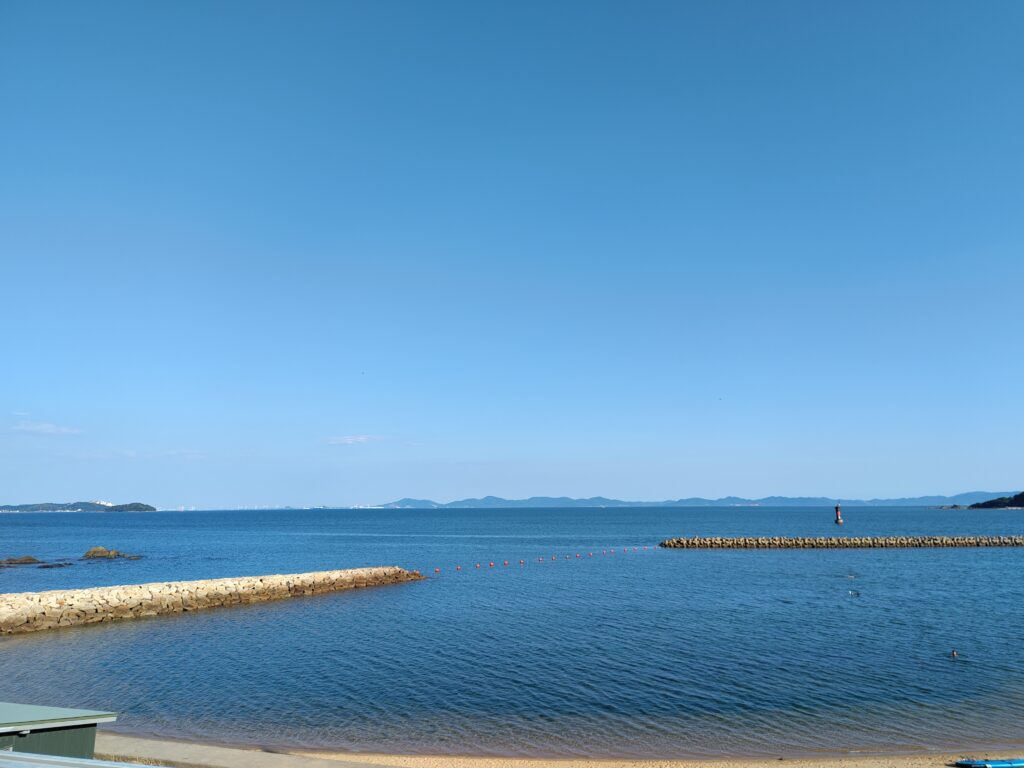
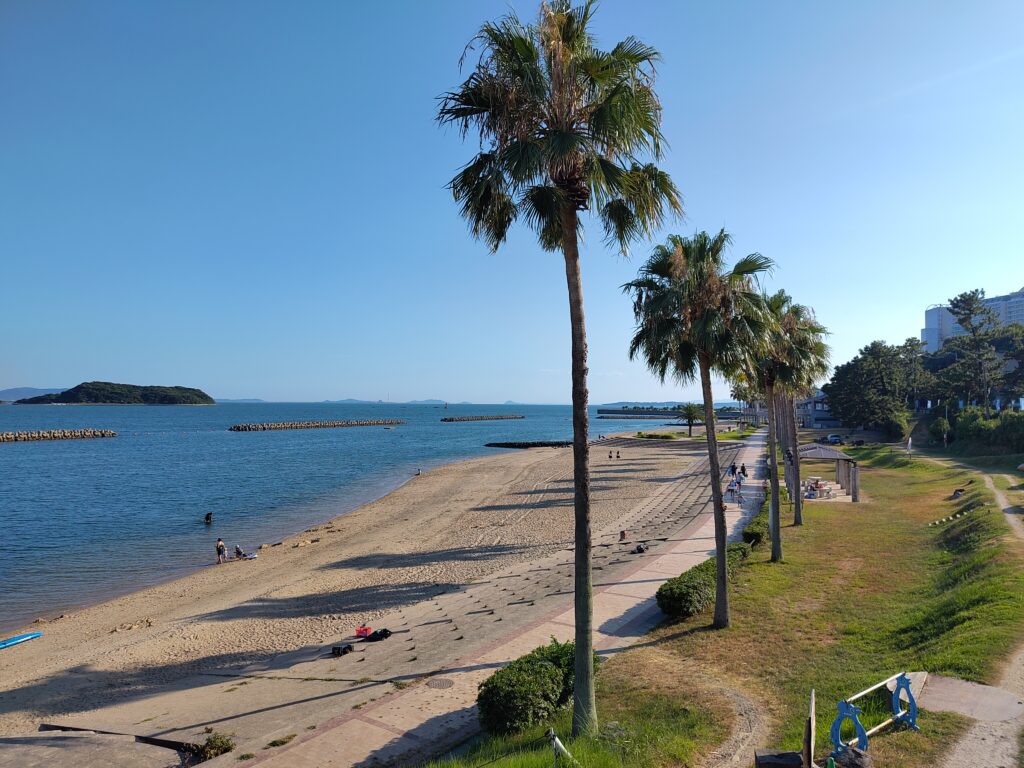

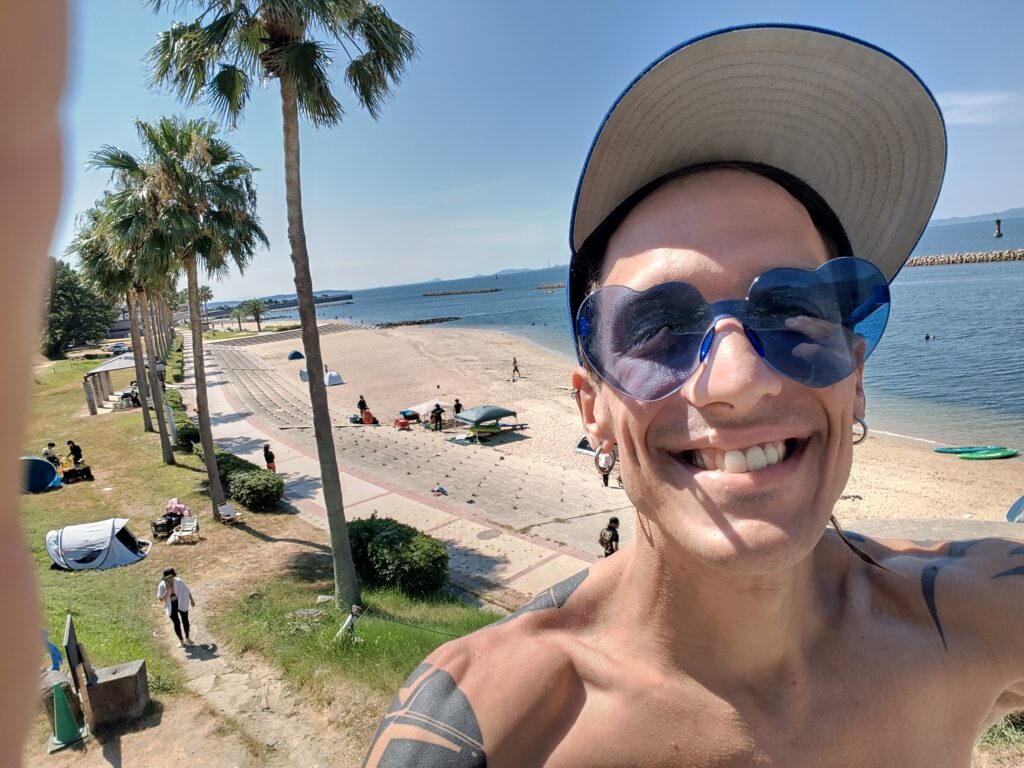


If it is sitting at goofy or in my room writing this blog or just going out and drinking with friends or getting lost in a smoking pod at Shibuya station – I feel at home here, like I always had or more and more do, when I am in Japan and especially around beautiful friends and this great places. This feeling is one thing I want to share with you all along my journey and life here. So please feel invited to follow my stories, if it is the past visits or everything from here on I will tell and continuously be writing and trying to take a hold off in the form of pictures.
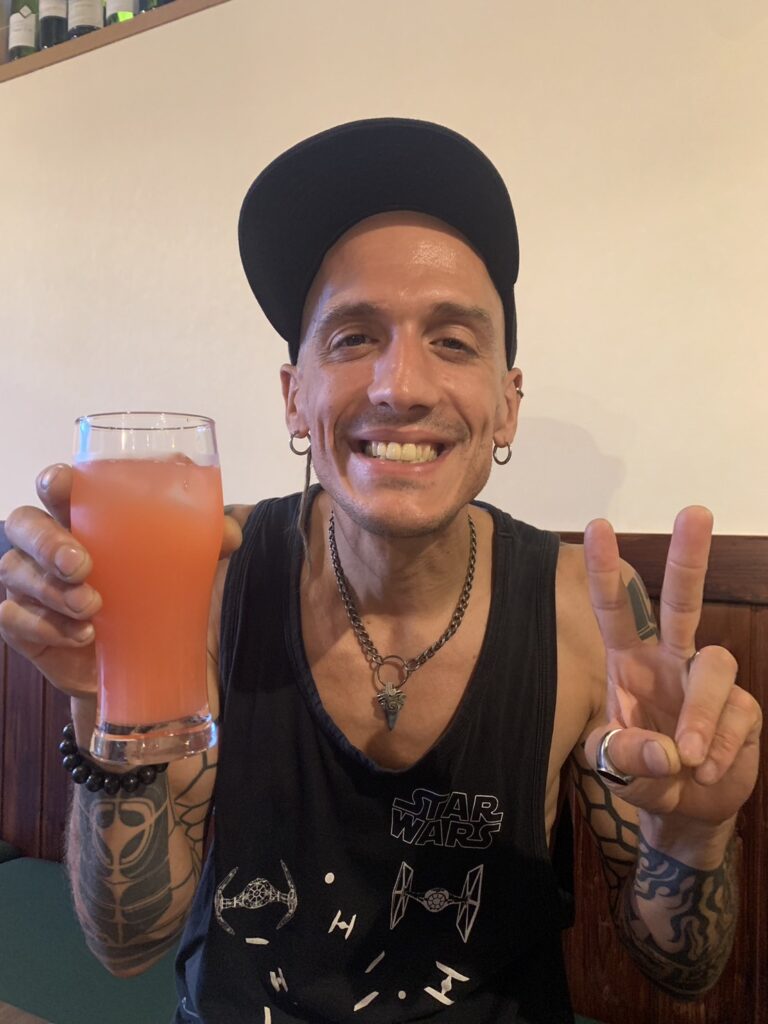
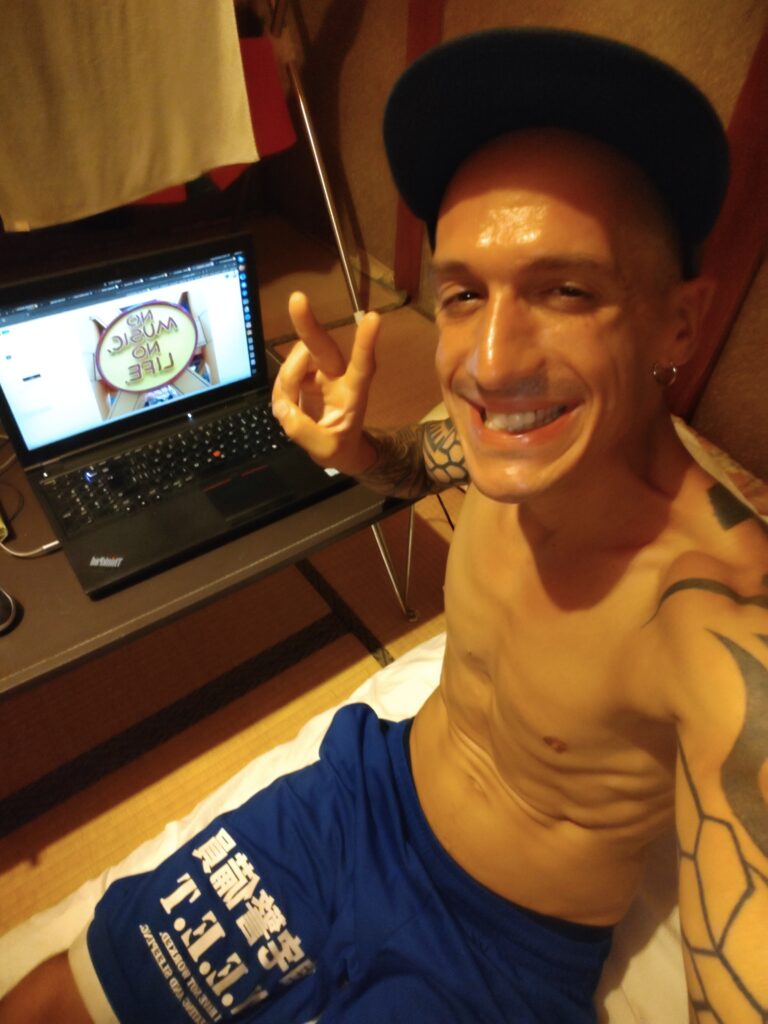
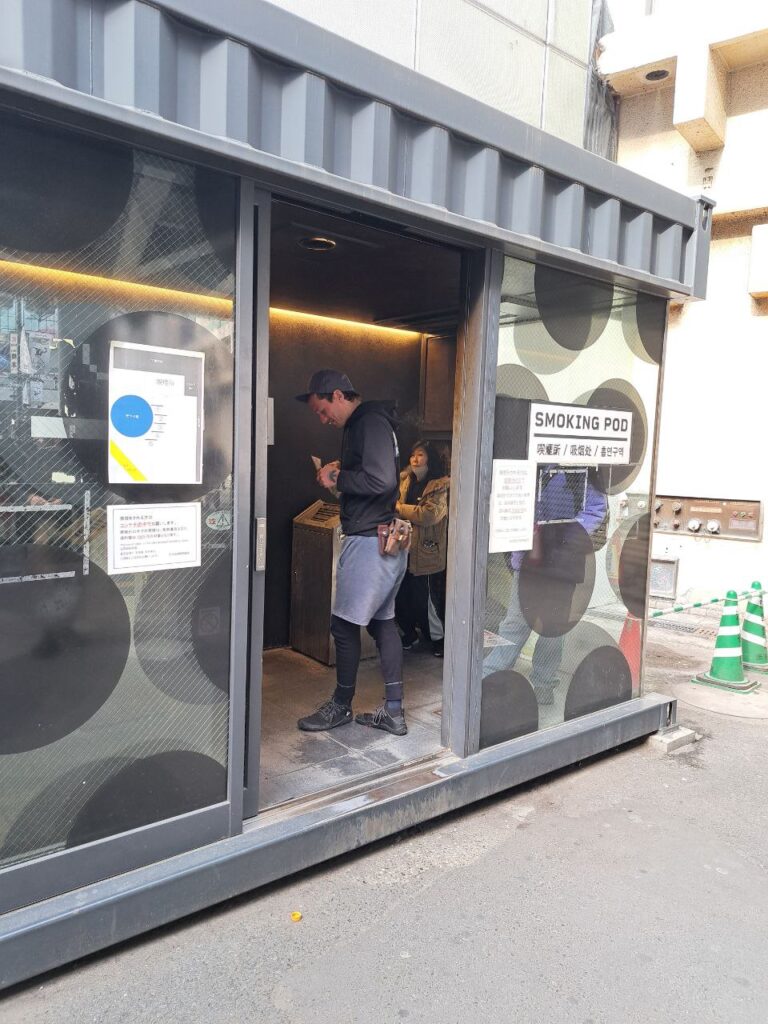

Cafe goofy, Hazu and it’s endless affinity
This cafe is a wonderful relaxing space with very nice people running the space. I already described and wrote in the section of 2023 about Cafe goofy, where I mentioned the “me, taking time for myself” for writing and designing another part of my tattoos.
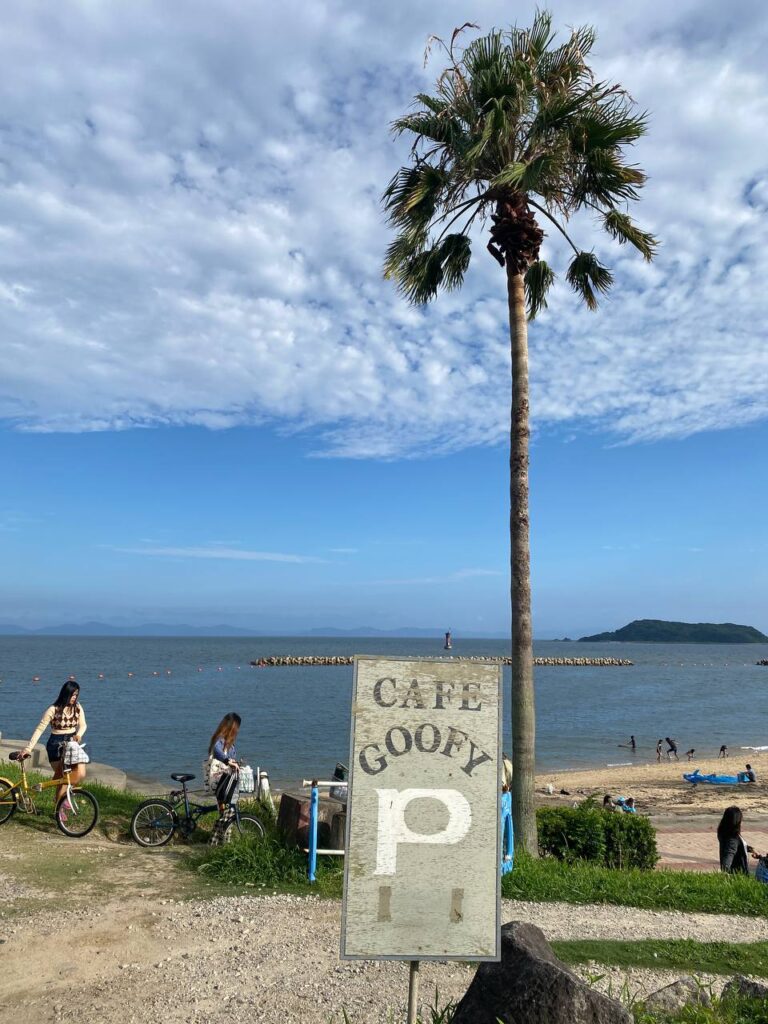


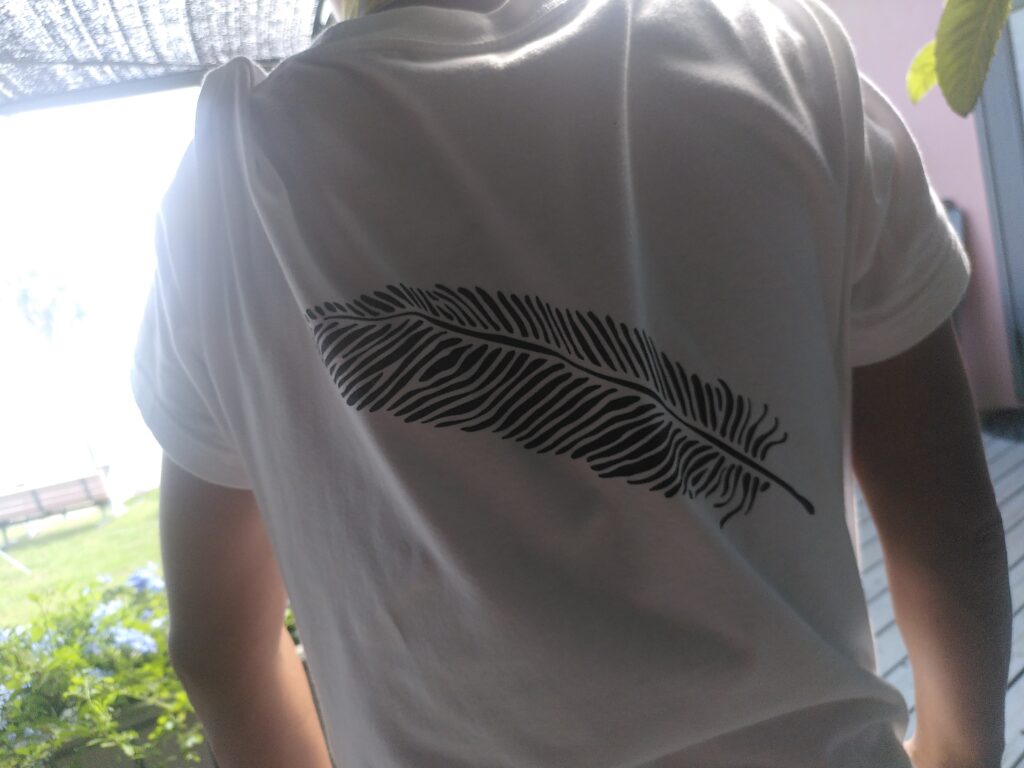
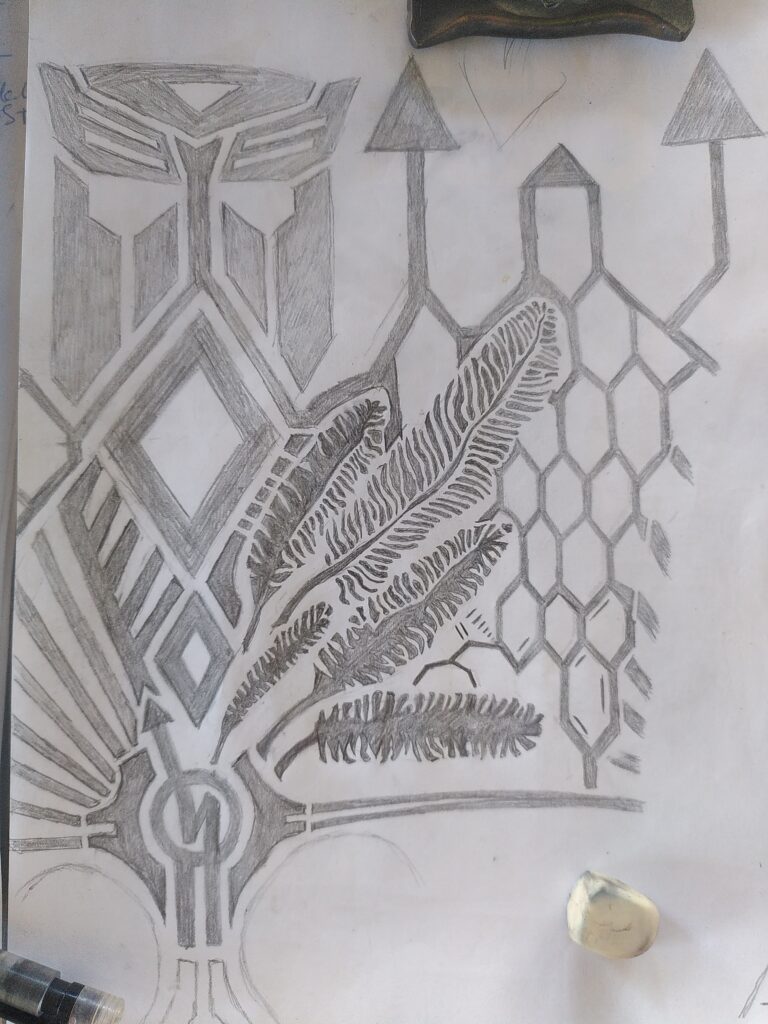

Another very interesting part we can find at Cafe goofy is a certain degree of economic self sufficiency and a different grade of specialized partitioned work like in the actual capitalist production method. This is based on knowledge allocation and so for the means to handle resources. The example here will be coffee itself. Like many other little cafes or shops (in Nishihazu and over Japan), the people of Cafe goofy roast their coffee by themselves in a very simple way, without having the need of a big machine. The outcome is on one hand your own creation of a blend, if you wanna mix the beans, and a distinct individualized taste. Delicious!



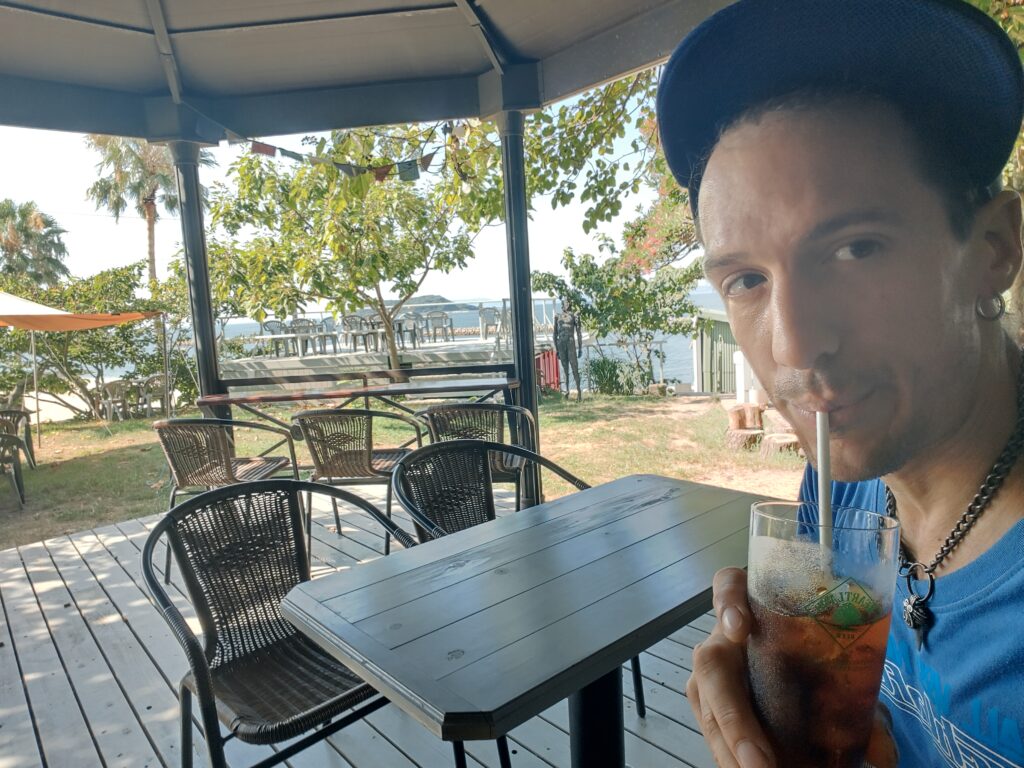
This approach goes on in different fields or levels when looking at other little companies. The small vegan restaurant called “Monologue” I mentioned in the first half of this year is not only doing their own garden with herbs or veggies, but growing almost all veggies by them self and the neighboring field is the rice they produce by themselves. At Miyamoto-Kojiten we produce as well rice and Miyamoto-san was up until two years ago also growing the own soybeans for the Miso Production Workshops in the Winter, but Aichi became to be to hot for growing soybeans nowadays. Nevertheless this degree of a much more autonomous and at the same time more holistic production method is still quite different than what I got to see and experience up until now in Switzerland. We are running a Tofu factory, for more than 40 years and it also was once a part of the dream to grow our own soybeans, but we’re far from it when looking at the specialized work allocation in Switzerland.

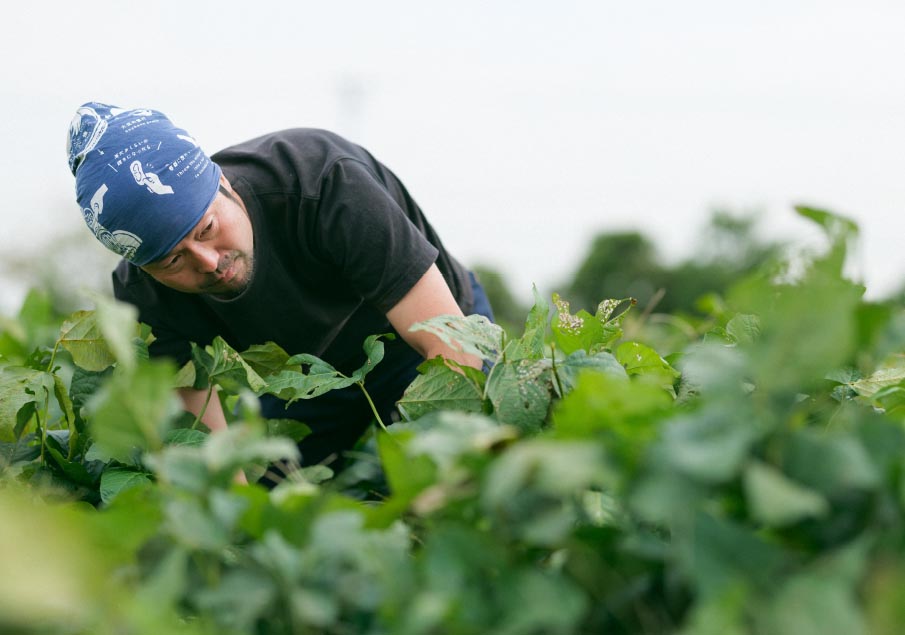
Contrary to Tokyo, Hazu has shown me the countryside of life in Japan, and besides the described insight into economical and societal alternative structures, it embodies quietness and nature’s beauty to me, emitting an endless affinity I feel drawn to and definitely will follow for the time being.
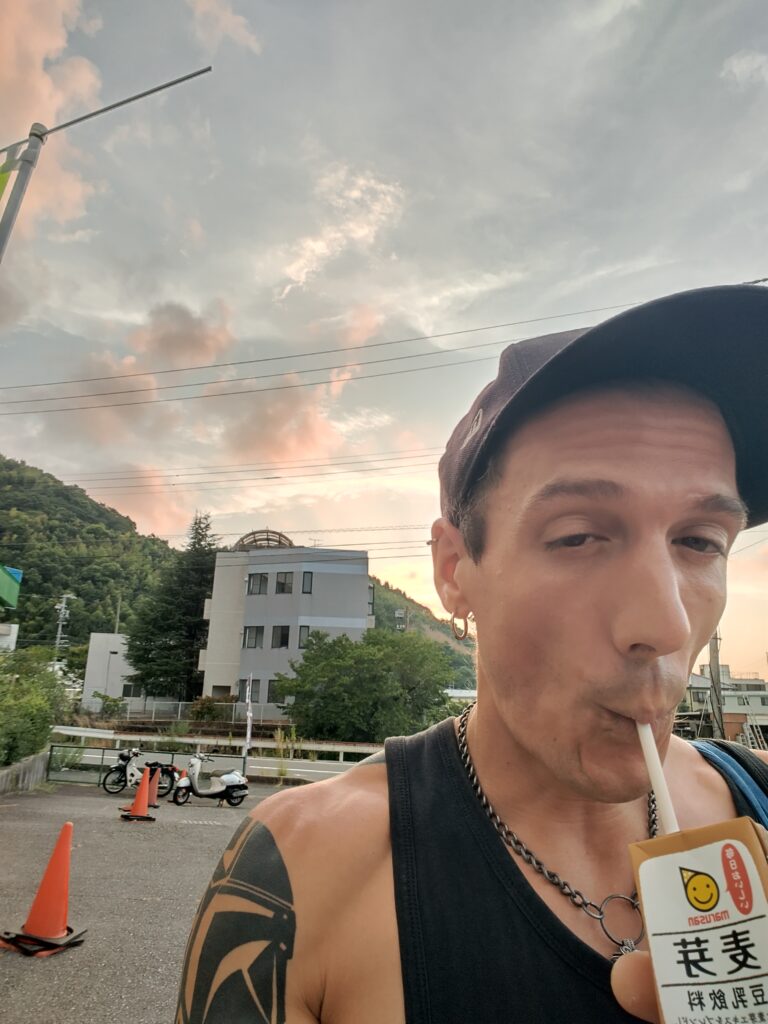
Pizza & Gelato – Italian Vibes at the seaside
Where Cafe goofy stands for Floridan holiday feeling, the Ocean Pizzeria and William’s Gelato give you the impression of being in Italy, with authentic Wooden stove Pizzas and a Cappuccino from a Cimbali-Machine. The Pizzeria doesn’t have this normal thirty or forty tomato based Pizzas as offer, but much more some crazy creations like “Matcha Honey Pizza” with Ricotta and no tomato. First I thought: Ma che schifo! But I was proven different. We European might have 40 different Pizzas, but their all quite the same and they don’t take you on this incredible journey of indescribable tastes, which also applies for the self-made Craft Cola or Elder-Flower soda. The same can be said about the Gelateria, which doesn’t have a direct Ocean view, but is located on a heightened space with beautiful sight over Nishihazu.
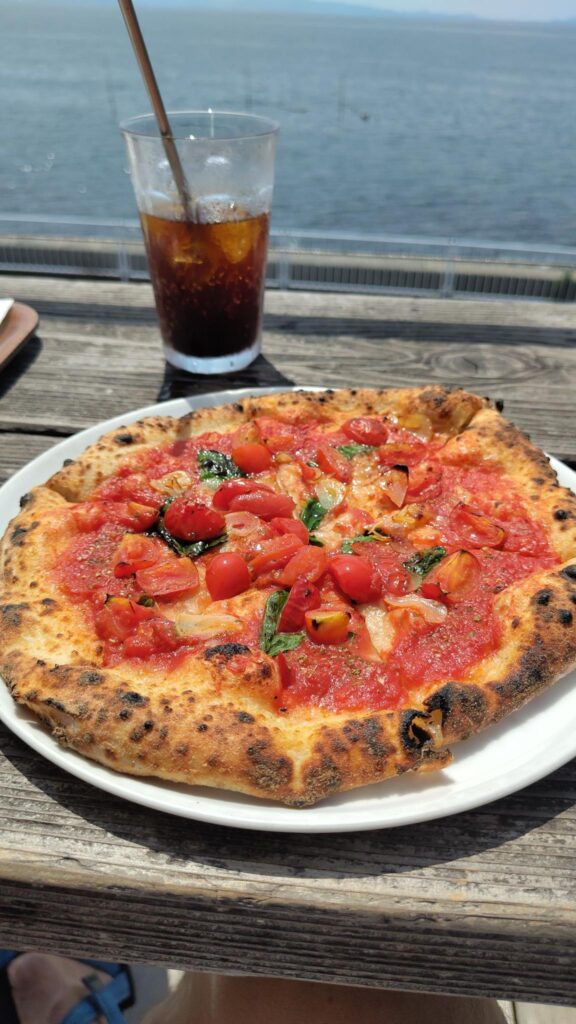
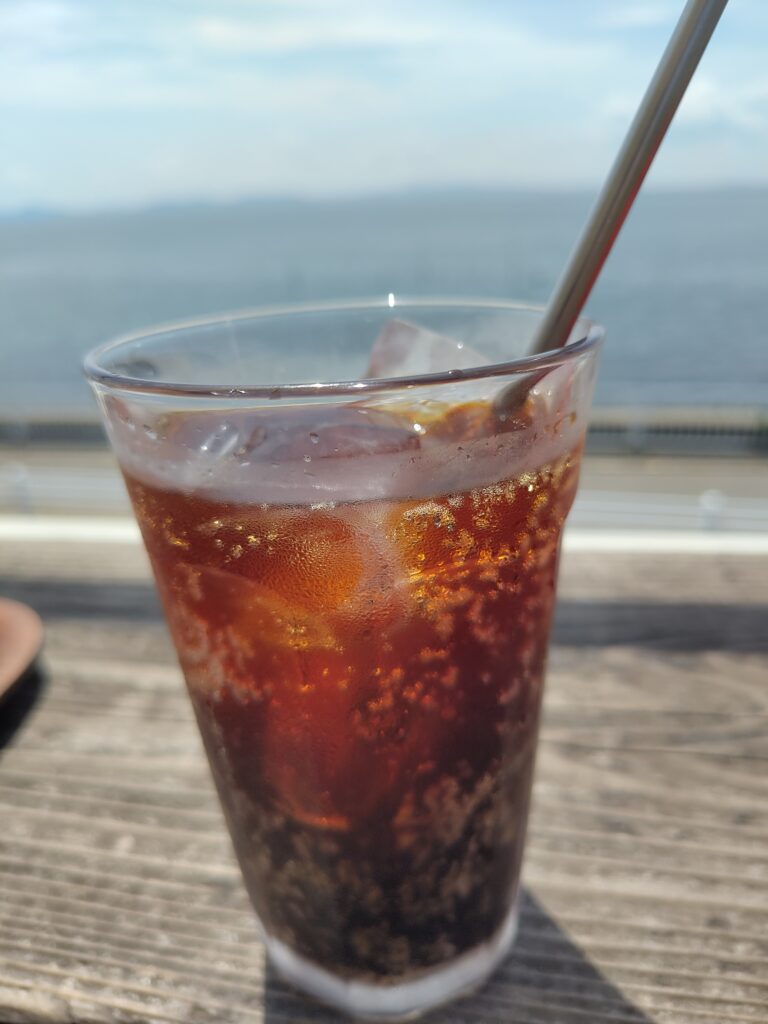

The Ocean Pizza and William’s Gelato are both run by Isshin-san and certainly as well by a beautiful team. Isshin-san is and old friend of Miyamoto-san and could be described as a local politician with a certain influence and impact on the local community. Like many of the people in Hazu, also the people of Cafe goofy, they stand for sustainability and a reliable future. The gelateria shows that in a very nice way with a beautifully drawn picture inside, which describes the way and origin of the ingredients up to the finished product. On the outside they have a small garden – like many of the businesses I described – where you can take a walk through to see some ingredients or the composting.
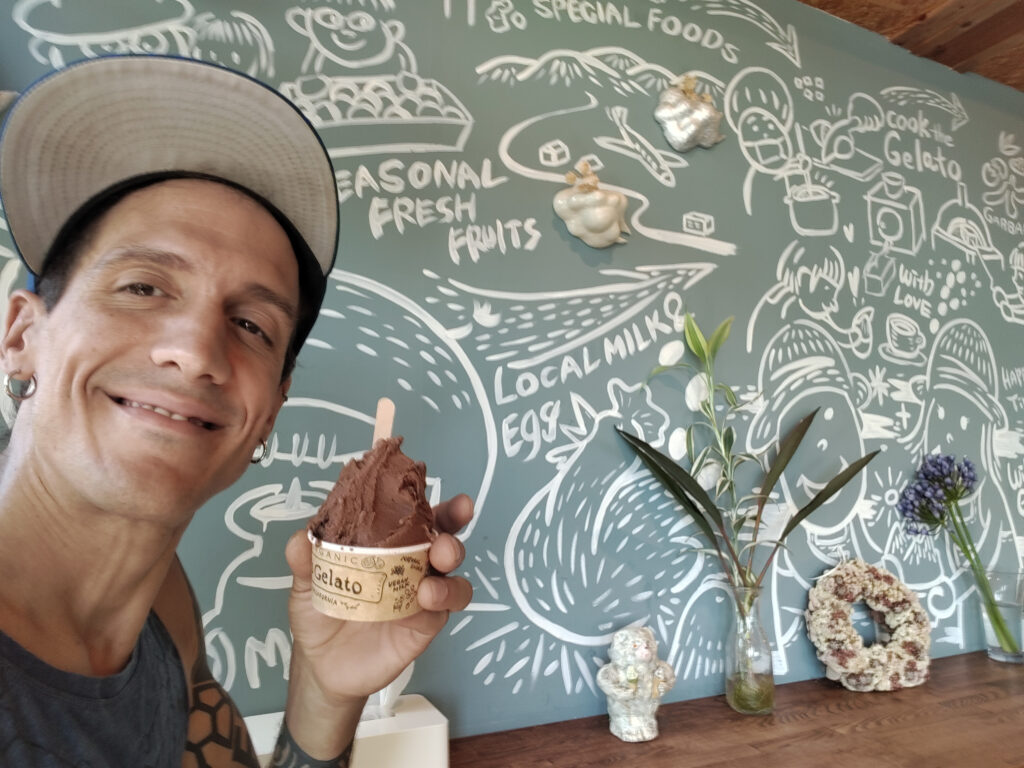

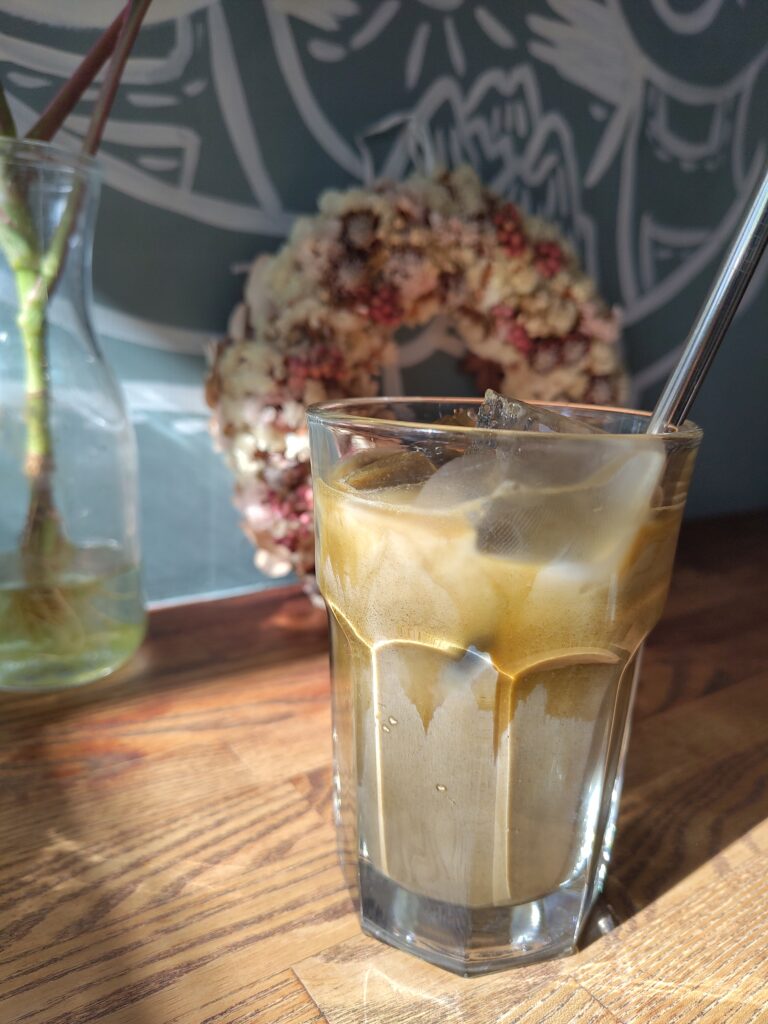
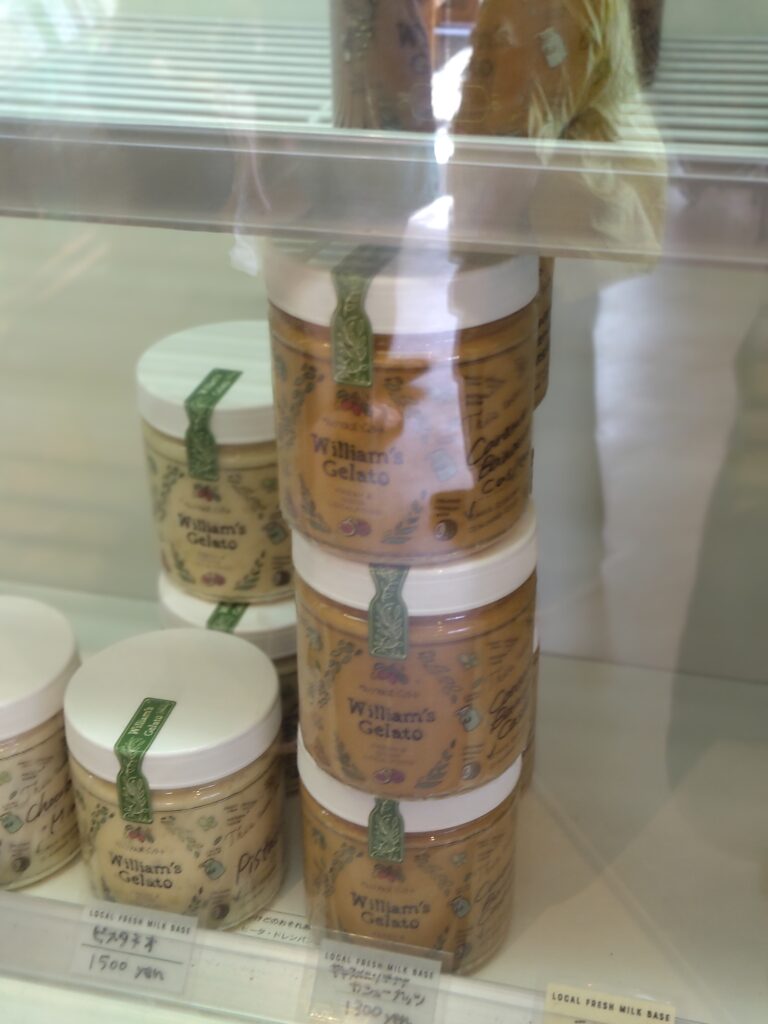
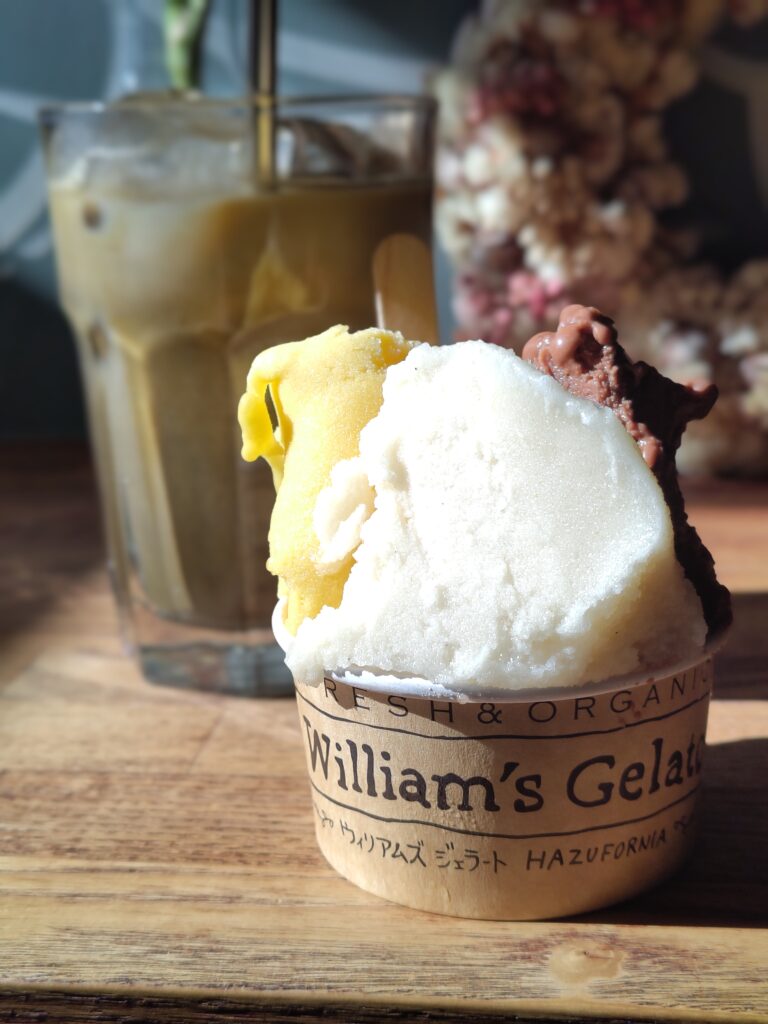
I was also inspired by Isshin-san and the Gelateria in a way that I took it back to Switzerland in our own store’s concept: We used to to ice cream since the beginning, but we never promoted it this much and we stopped doing it in Winter or almost half a year. Here in Japan they run it all year long – and it works! So why not doing it like this? And as we struggled (and still do) a lot back in Switzerland with our store’s income, we derive more and more from the Zero-waste concept, because the people aren’t yet ready for it. Here as well we took our paragon William’s Gelato when creating the cups we are selling now in our store.
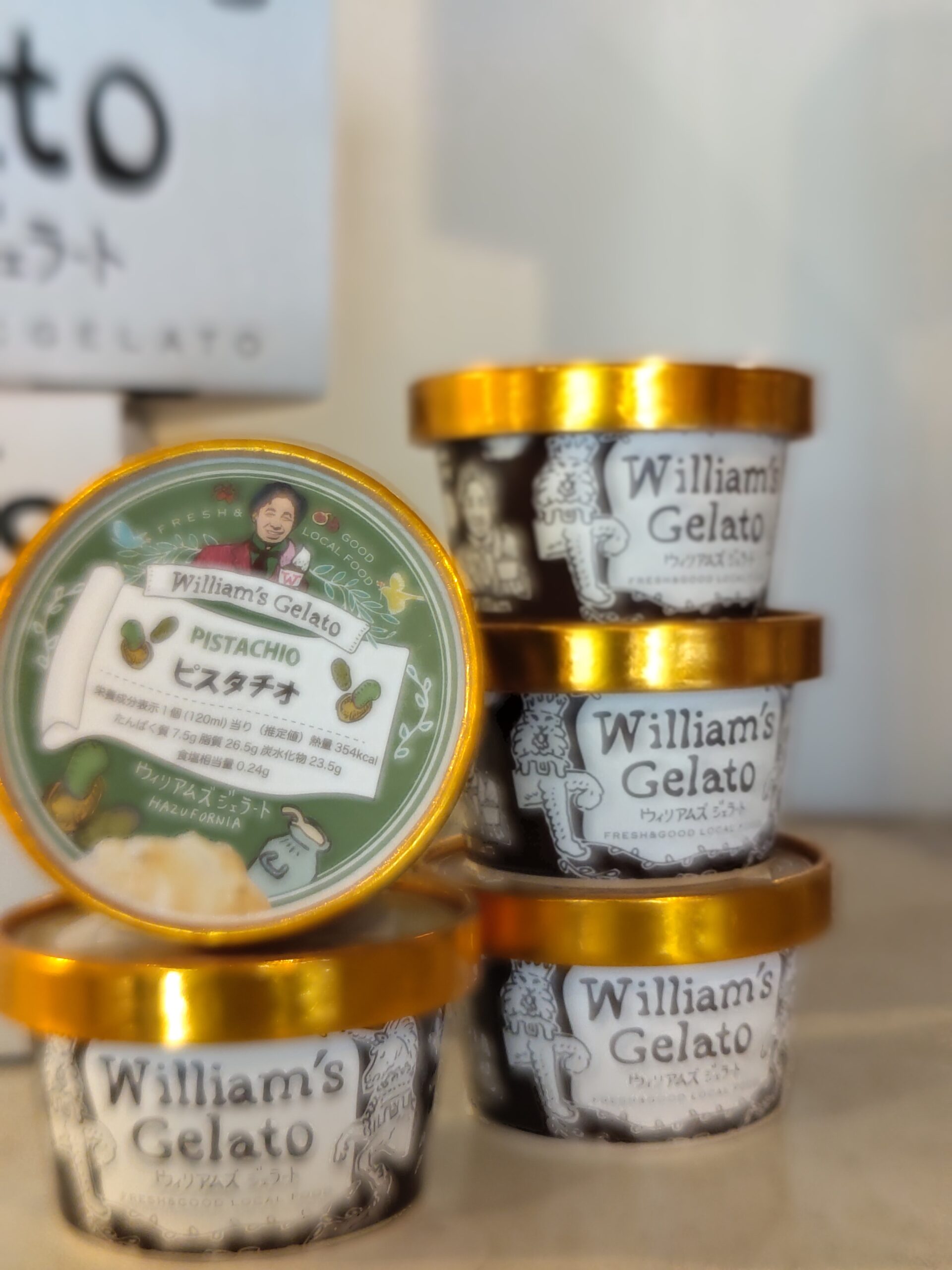


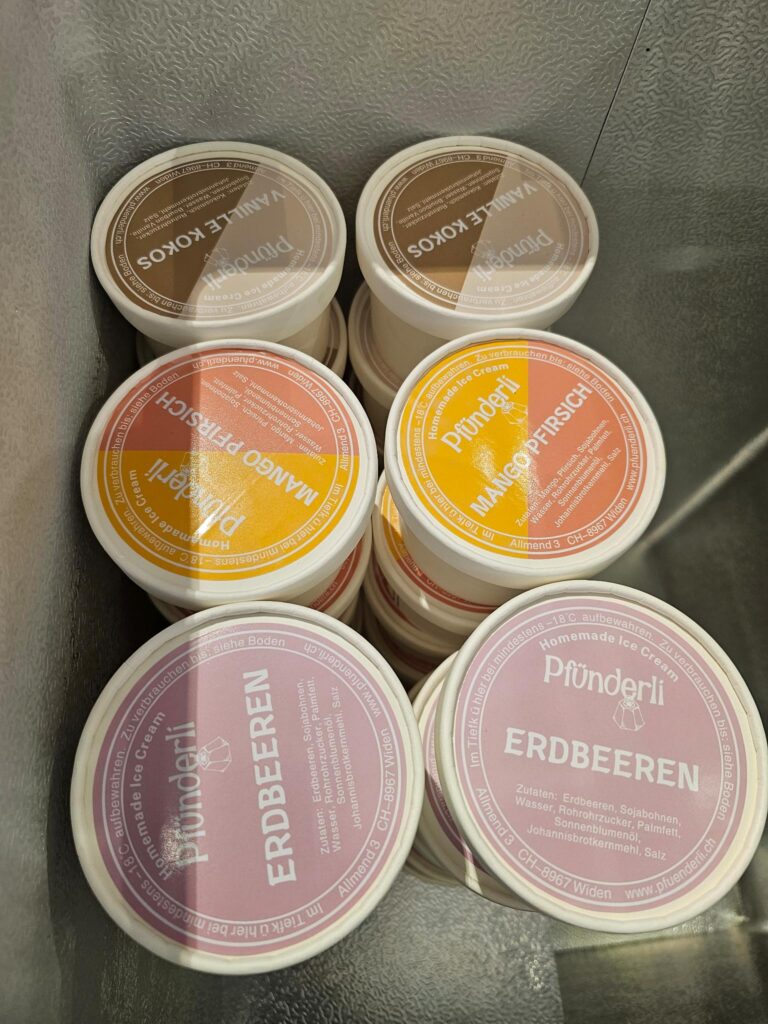


Driving and Residing in Japan – How Bureaucracy works here
Let’s take a step back to all my preparations and preliminary work I had to do or fulfill until I could come to Japan. Sure, depending on your country of origin, you can come anytime as a tourist, you get a normal stamp at the airport and can stay for 90 days (up to a maximum of 180 days in the period of 12 months). But this time I wanted to come longer and therefore I had to apply for a long-term visa, respectively long-term residency. It takes at least three months to go through this whole process, of which the “Certificate of Eligibility” forms the core of your stay. This is a long document, which describes your purpose of stay, lists your responsible person and other personal details, such as your financial means or assets. You might also get asked several times to submit further material – besides correcting every small little mistake in the document.
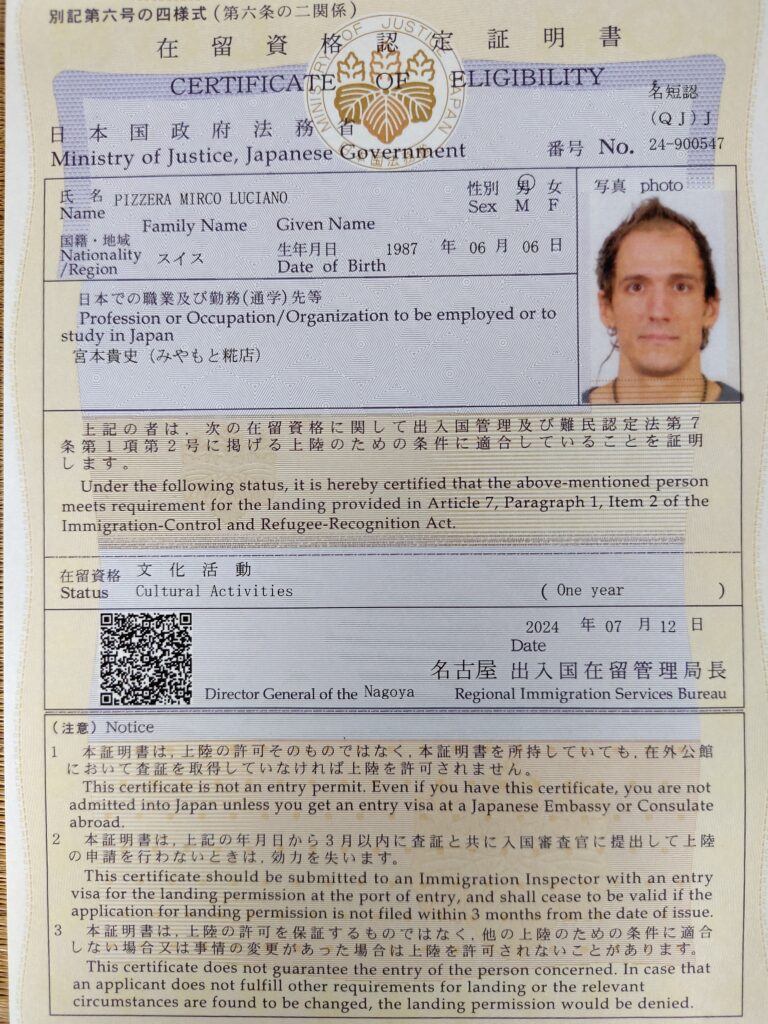
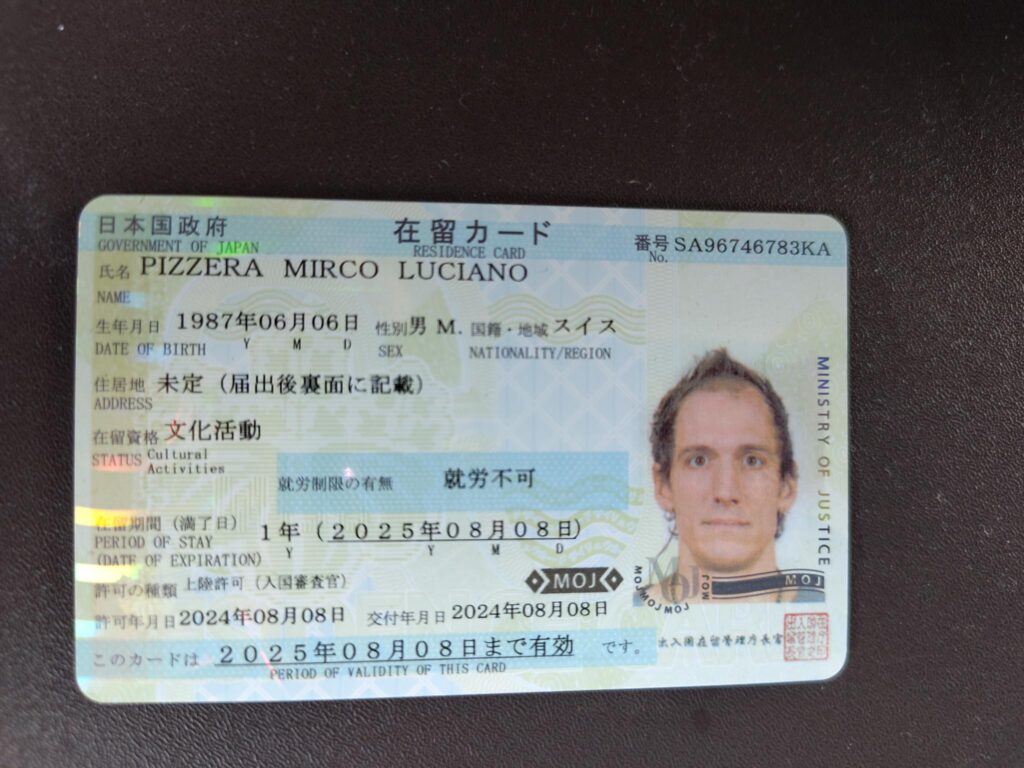
I didn’t go for the most usual version of the CoE, which would be a normal working contract or relation to a company. I applied for Cultural Activities, where you will be going to Japan to study a certain field of Japanese traditional handcraft or knowledge under the guidance of a Professor or Master. In my case this would be the producing of Koji and Miso at Miyamoto-Kojiten. In most cases you would also not earn any money, but rather learn or study the content of your purpose. This seemed to be the exact right way for me to go once for a longer stay to Japan.
As a next step I realized that on the back of my residence card was no address written, which I needed to apply for a Japanese phone number and a permanent driving license (which you can get after living for at least three months at the same place in Japan). The appliance for a temporary driving license as a Swiss person was kind of fun: Sign up at the page of JAF (Japanese Automobile Federation), submit pictures and information of your driving license to apply for a Translation and pay 4000 Yen. In short time you will get a number, which you will have to insert at a Multi-Use-Printing-Machine in a 7/11-Convenience store to print it out – done. And therefore I was soon driving my dream car: a Kei-Truck!
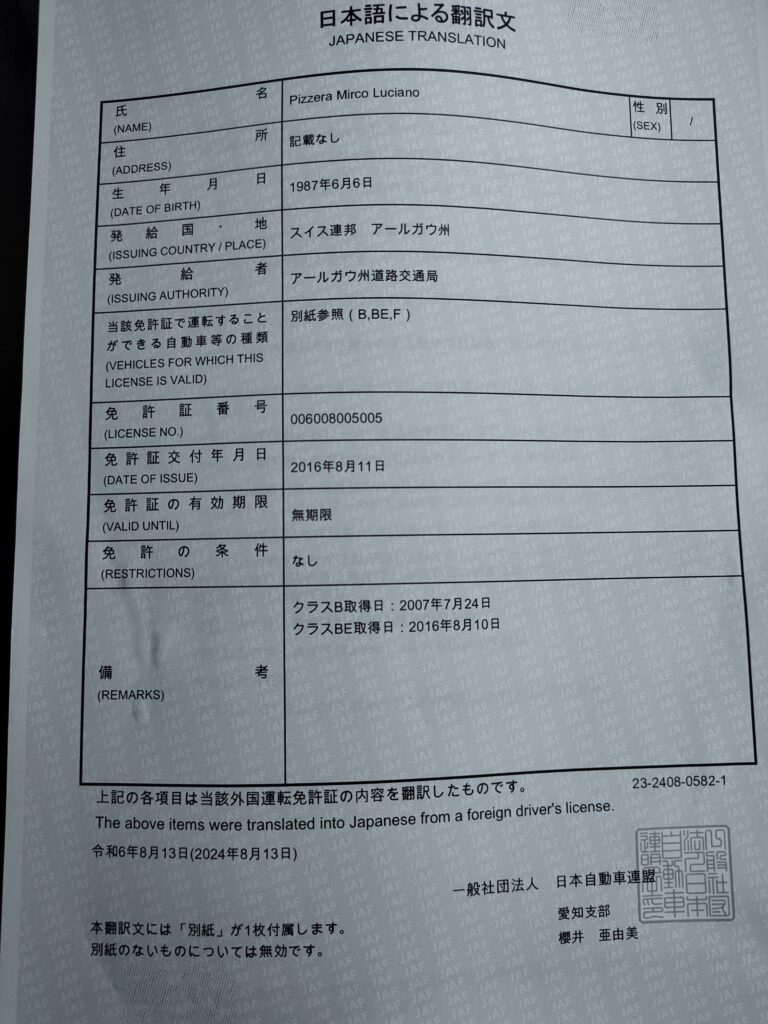
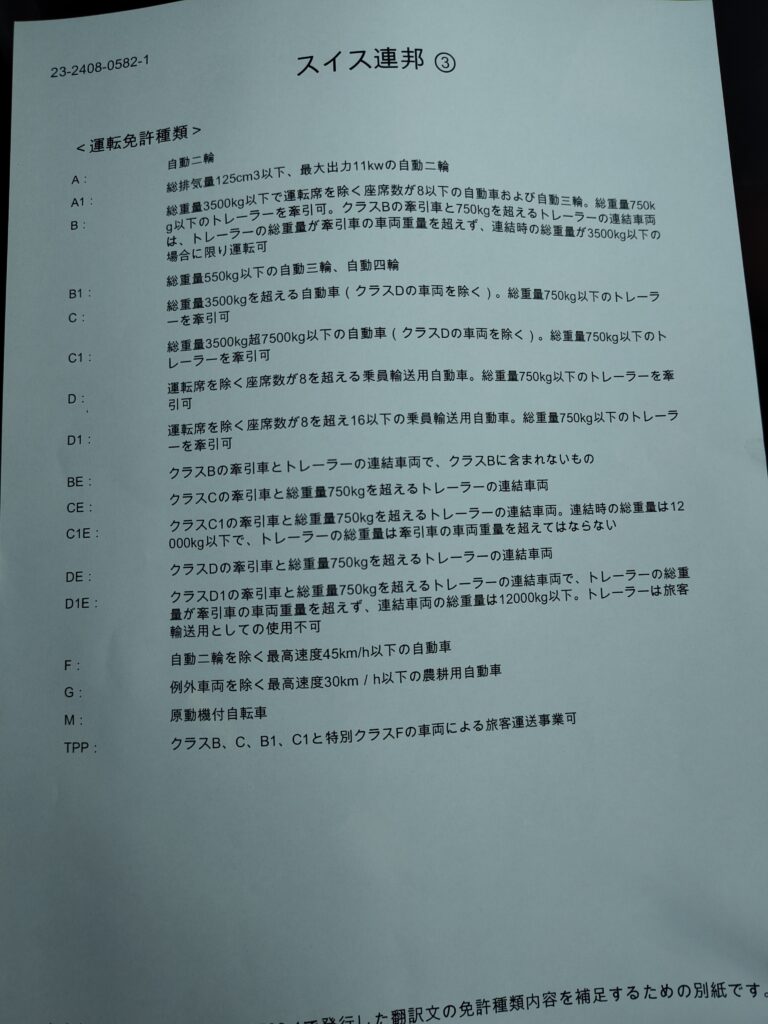
When I went to Hazu’s government office to put my address on my residence card, I got already confronted with health insurance, retirement arrangement and many other Japanese citizen stuff and duties. I am growing to become a local citizen – at least on the paper. The bureaucratic in this country is huge. There were up to three people caring about me at the same time, making phone calls, editing papers and so forth. And to everyone who believes cliches like Japan being a full digitalized country: not.at.all. Huge paperwork. And on every one I got: The local mascot character: Maa-chan (derived from the word macha : green-tea). Luckily Mizumo-san, who comes and works by the Kojiten around one day a week, helped me with all documents – and the Japanese writing, which is part of my daily study, but I feel like I still am nowhere;)
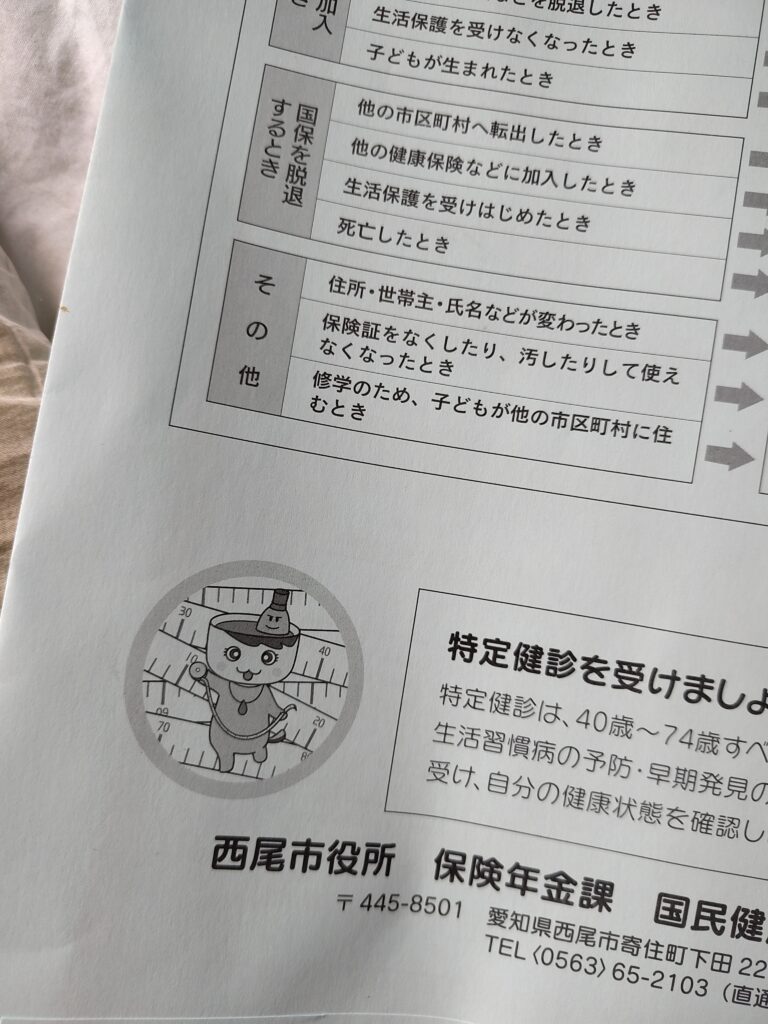
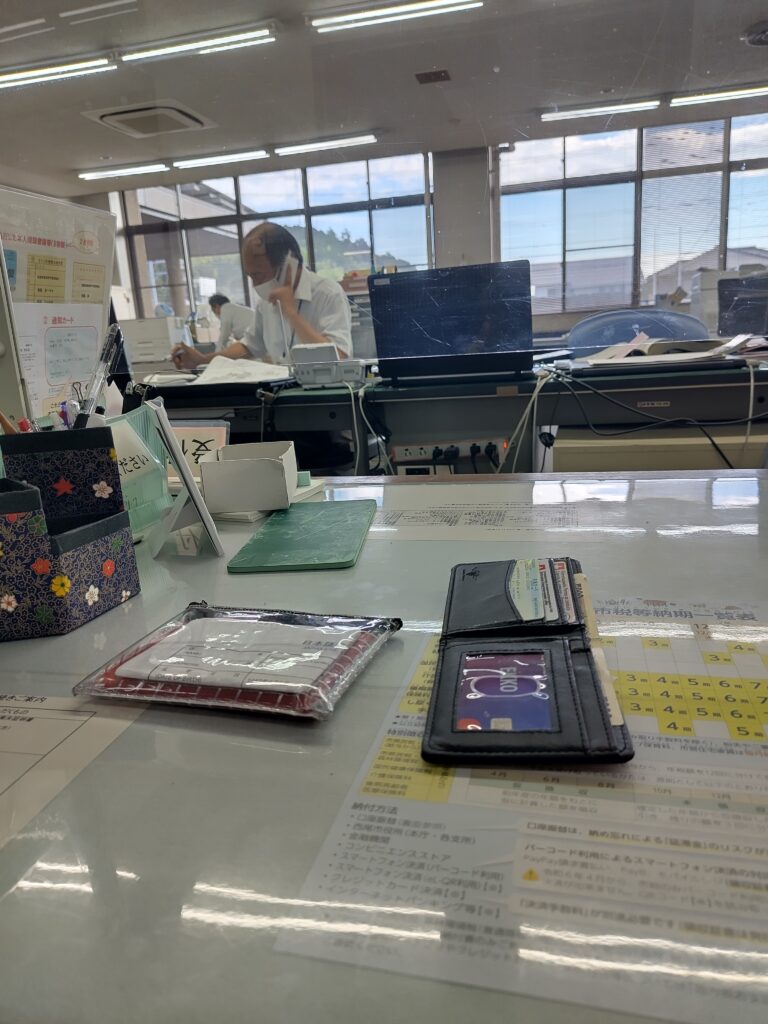
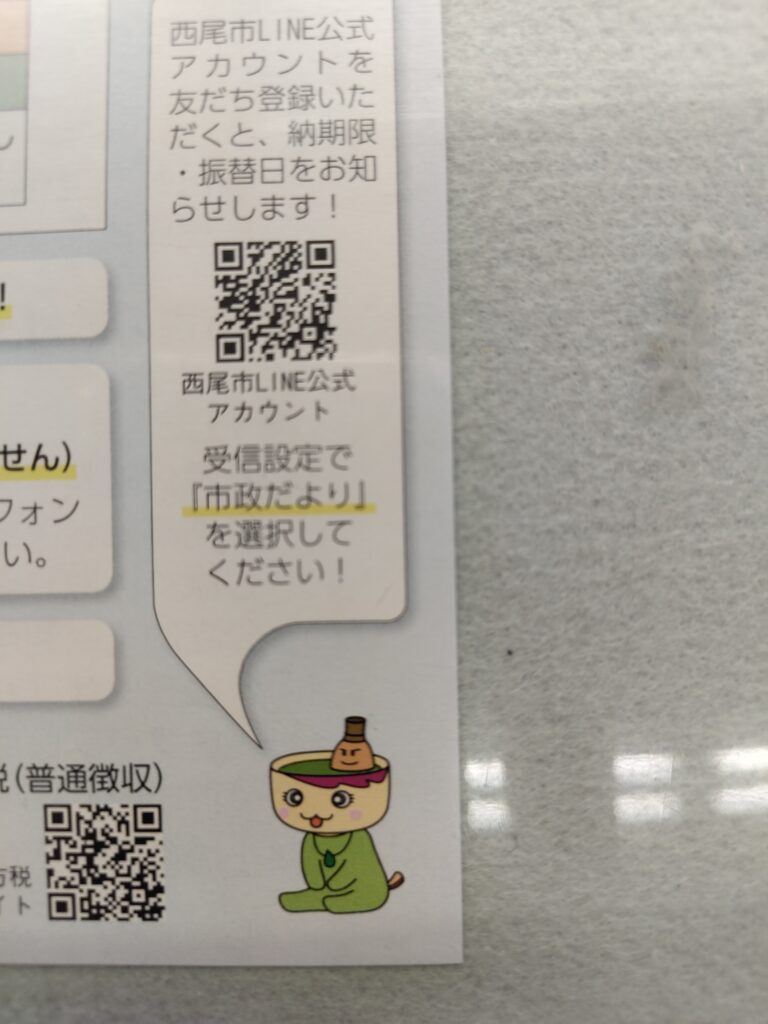


Mikawa Isshiki Grand Lantern Festival at Nishio City
The other day, when the Keiri-chan, wife of Miyamoto-san, and Na-chan, their daughter arrived, we went to the Mikawa Isshiki Grand Lantern Festival located in the area of Nishio City, the next big city from Nishihazu, around half an hour drive from our place. It was a typical Japanese Matsuri (which means Festival) with mainly two things: an attraction, which here would be the Giant Lanterns, that is to be celebrated and loads of food stands;) It was impressive and very beautiful and this evening I was completely satisfied with watching huge lanterns and eating a Tornado-Potato!
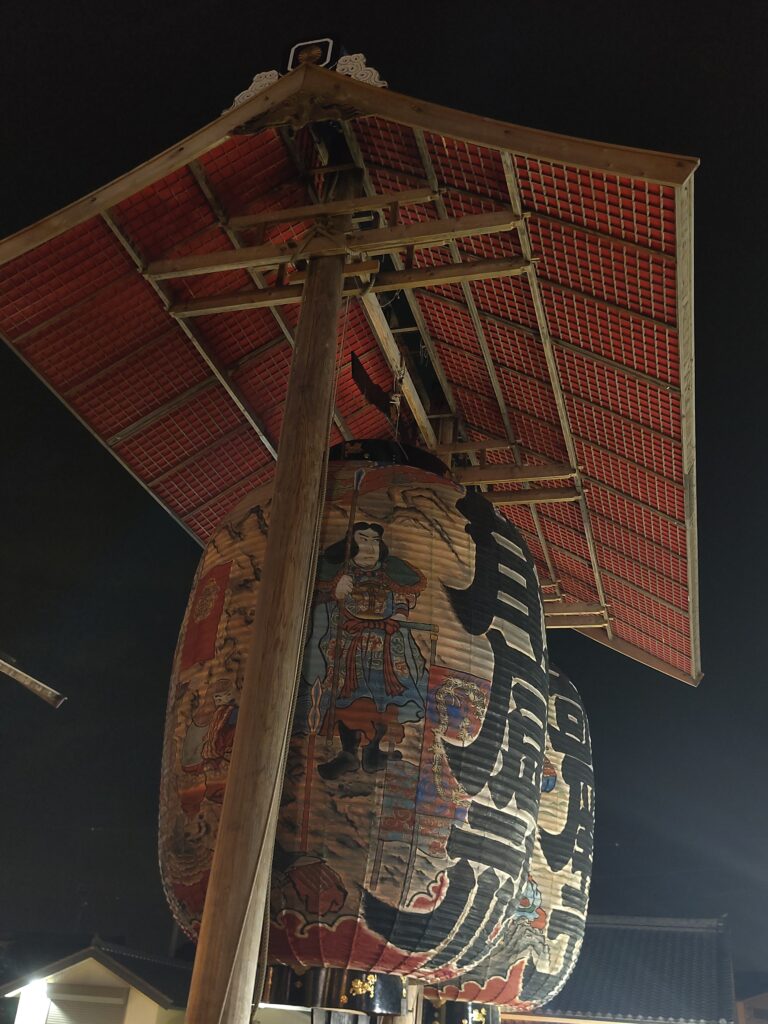



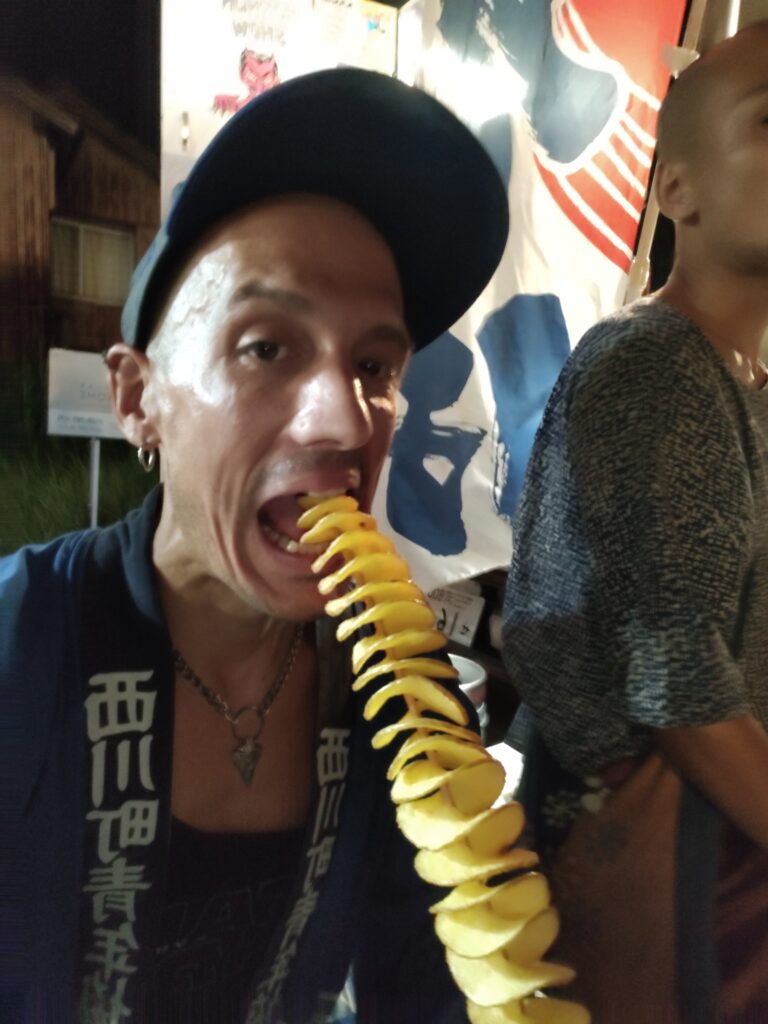
Day Trip to Gifu Prefecture’s old city of Gujou and the Amidaga Falls
we decided to soon make a one-day excursion to Gujou, an old and traditional city located in the prefecture of Gifu. We visited an old shrine, home of a powerful God, with a huge bridge, passage to another world – reminds you of Spirited Away. The trees there where even bigger and impressive, but it was no place for taking picture, holy places are meant to be how they are. An even bigger tree we went to see right after and it was incredible: a 1800 year old Cedar-Tree, not preserved with its original height, but the size is massive.
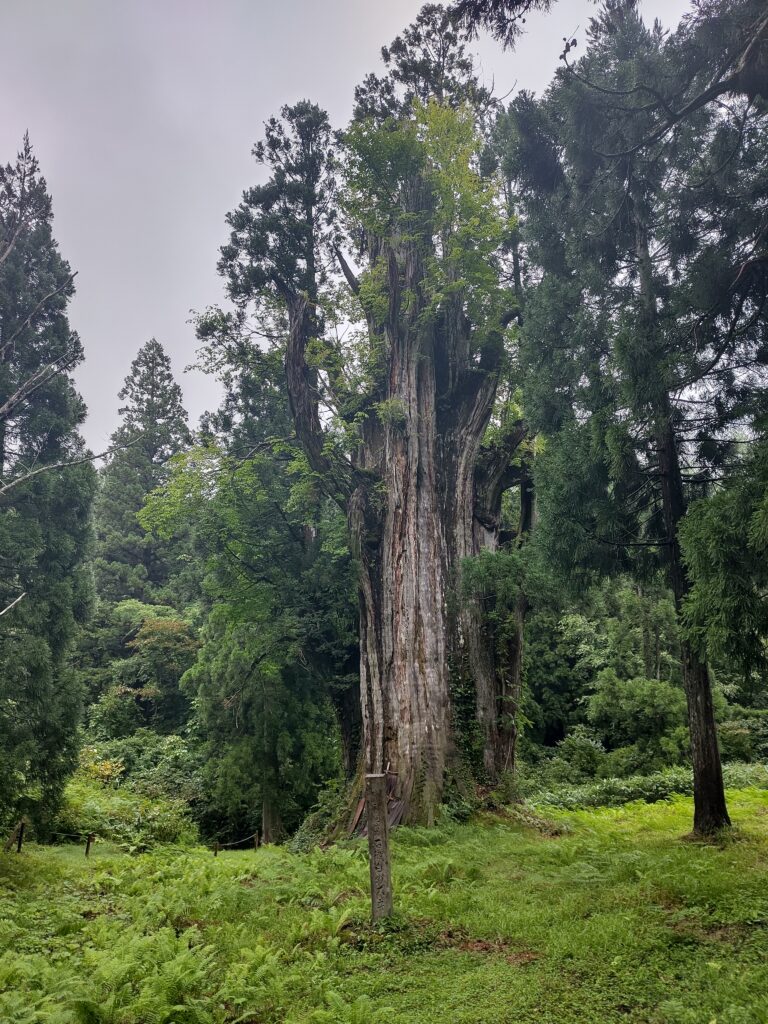
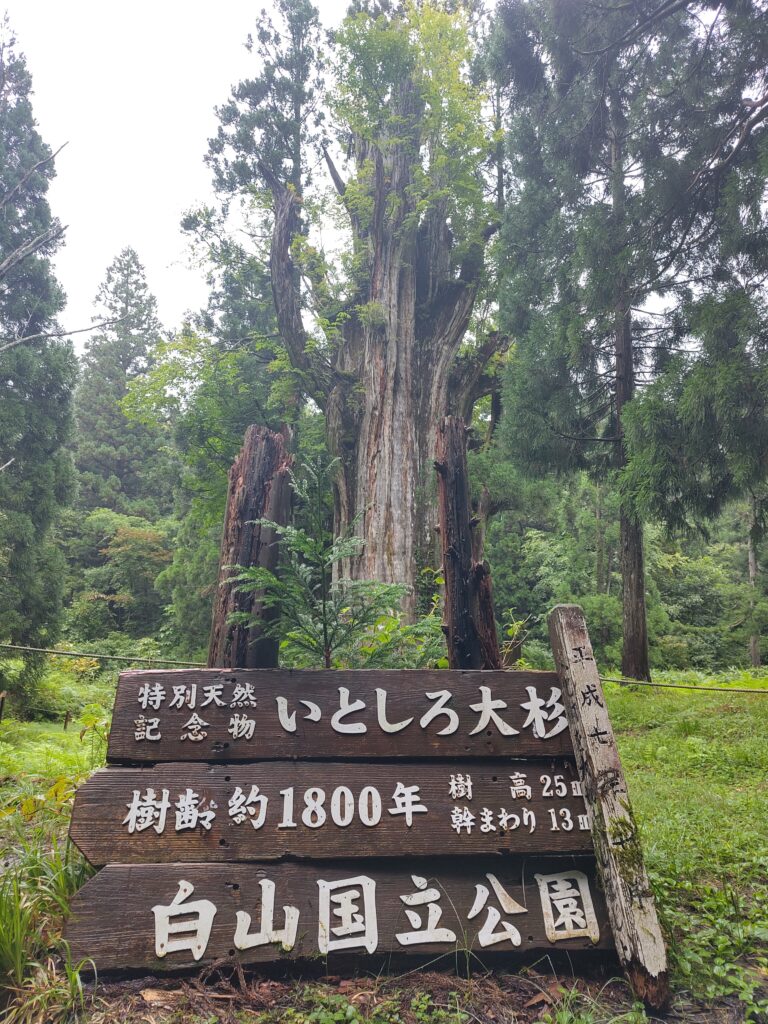
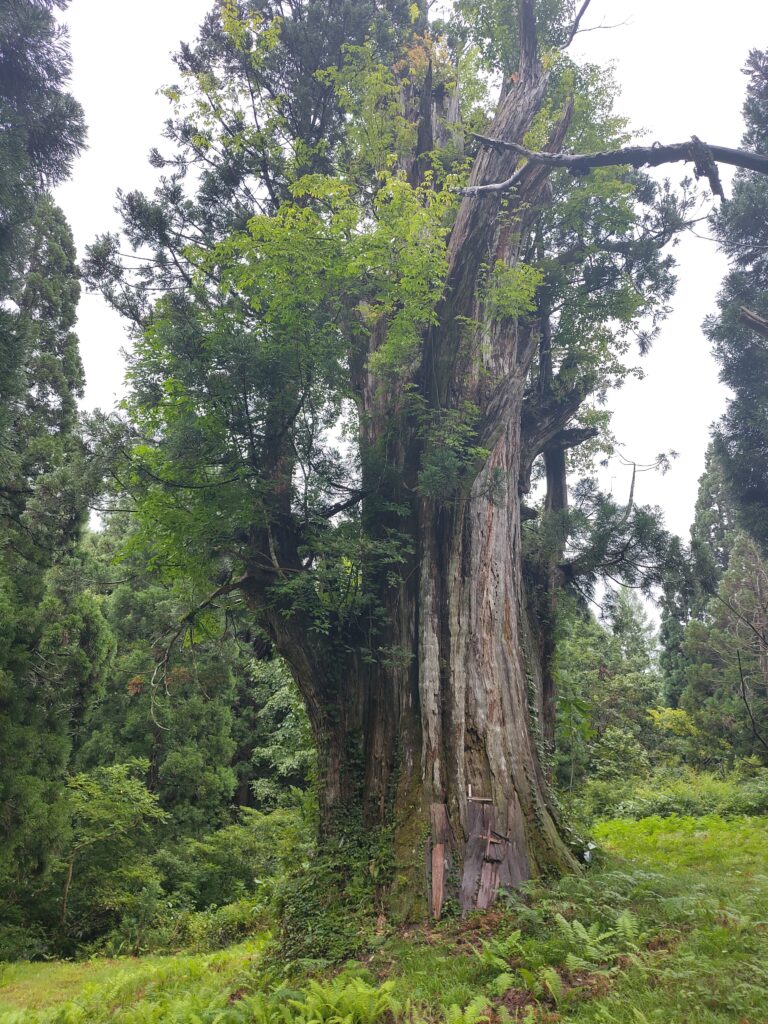
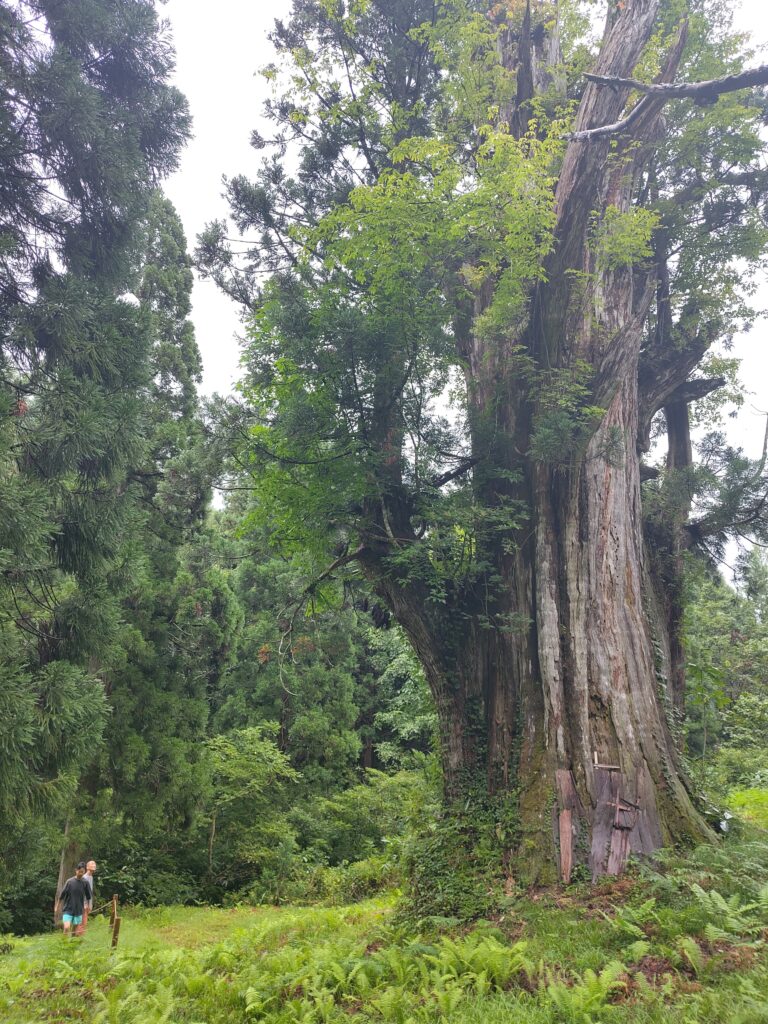
We also visited the Amidaga Falls, a great waterfall site. At this time it wasn’t carrying this much water, but still wonderful place. The composition of the rocks and it’s combination with the water was an astonishing view. On the way up we passed a small shrine, where we all rang the bell and as usually in Shinto shrines it goes like described: You take of your head and stand in front of it, throw a coin into the box, then you can hit the bell or gong (if there is one). You bow twice and clap your flat hands twice to held them flat to each other and then you make your wish. You are also welcomed to do different but always respect the other culture and the spiritual heritage, that lies therein as well as in these overwhelmingly strong nature landscapes. Listen to the sounds, feel the earth and the wind and let it calm your inside fire – can you see the sparkling drops of water?
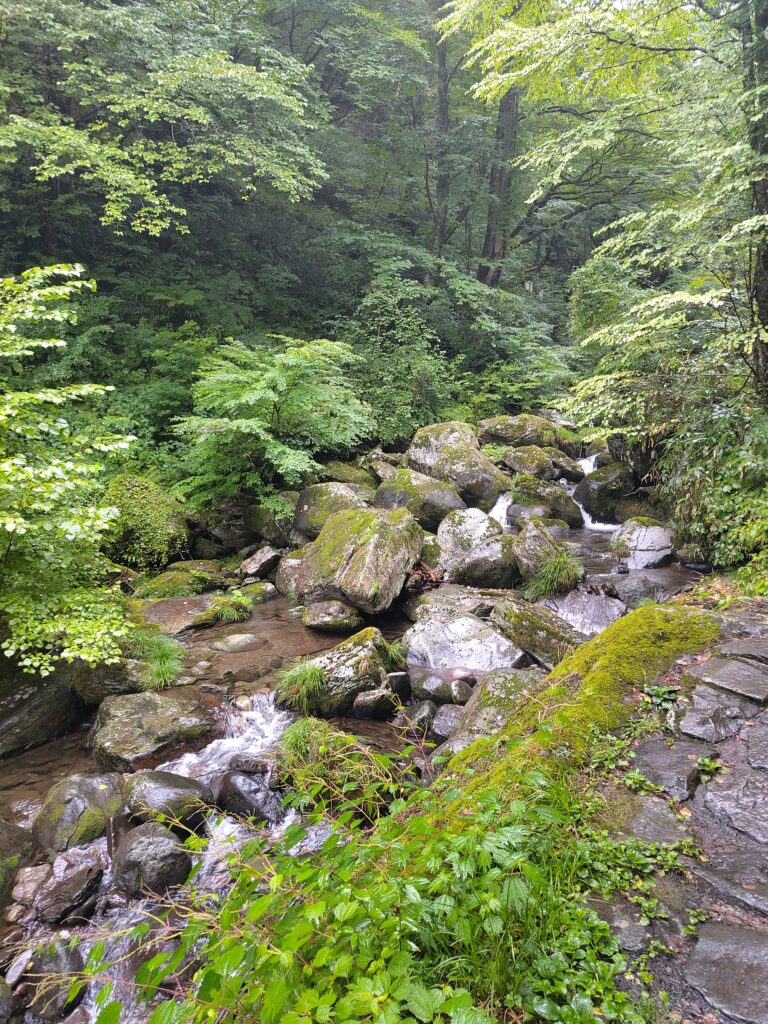

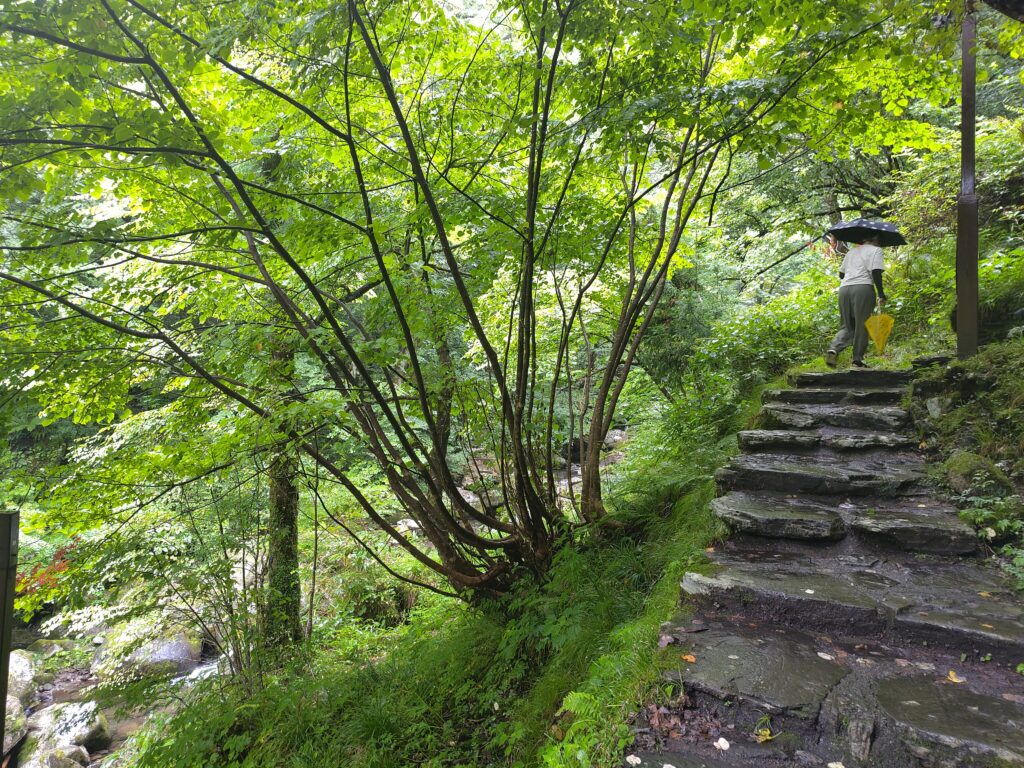
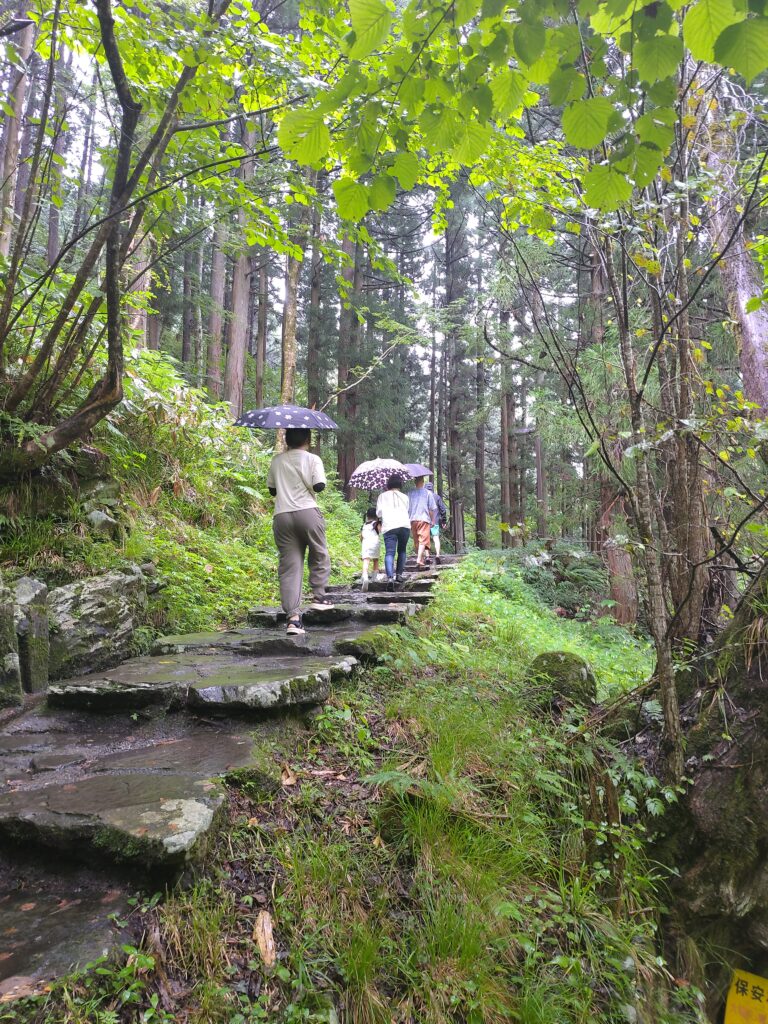


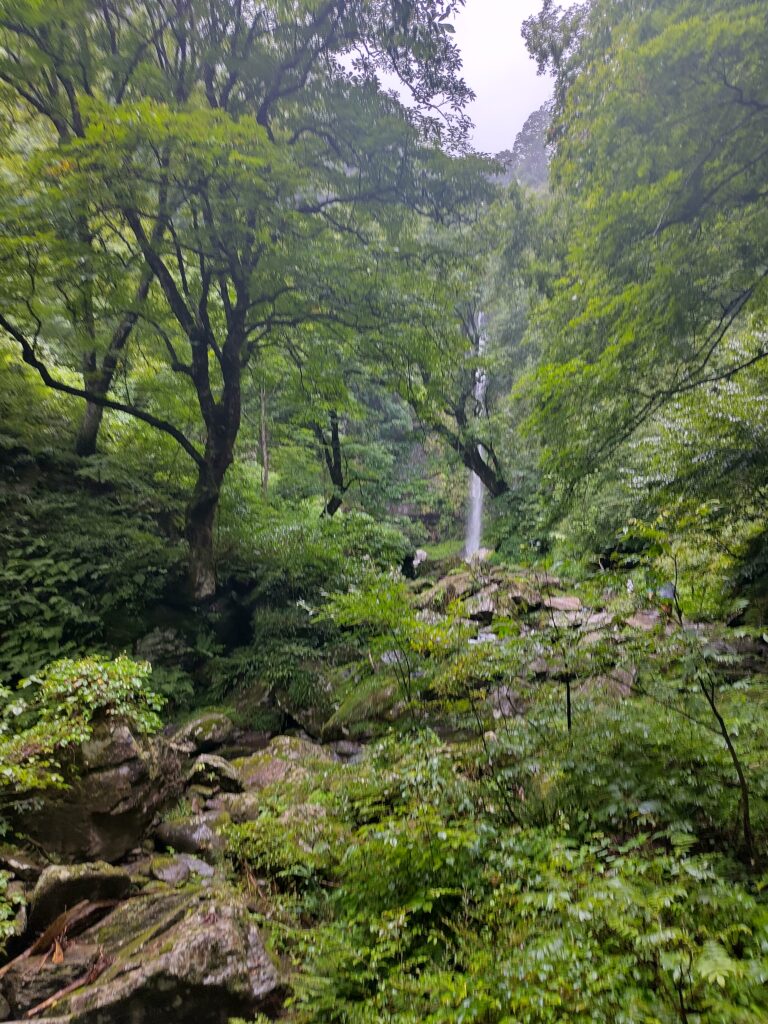

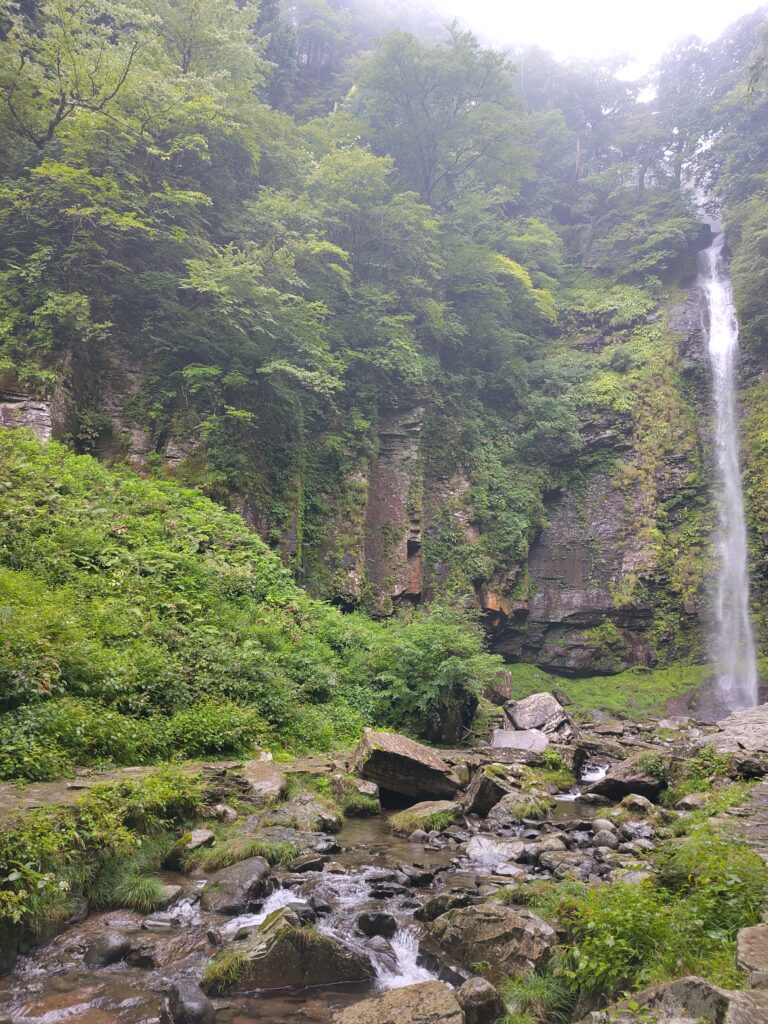
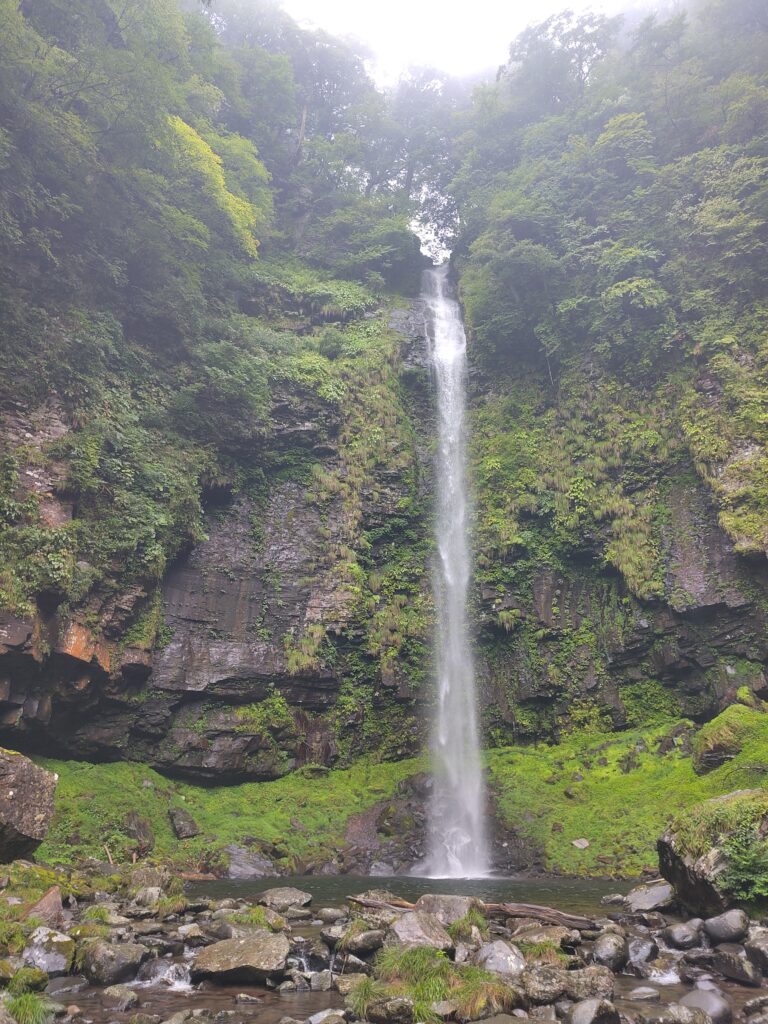


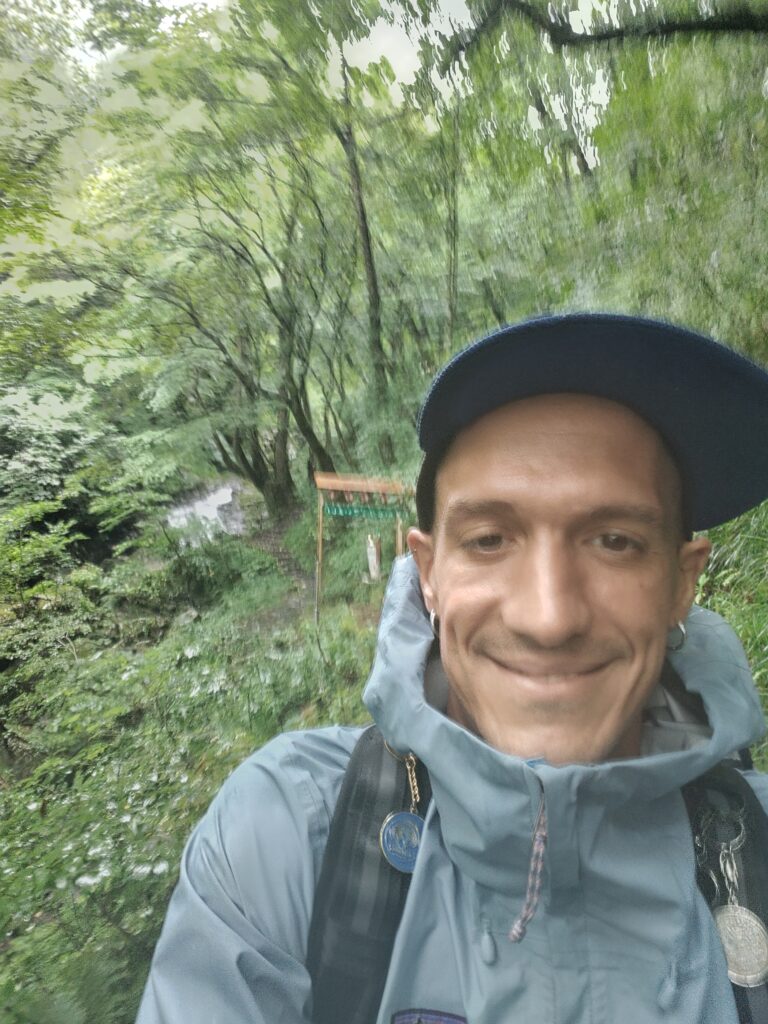
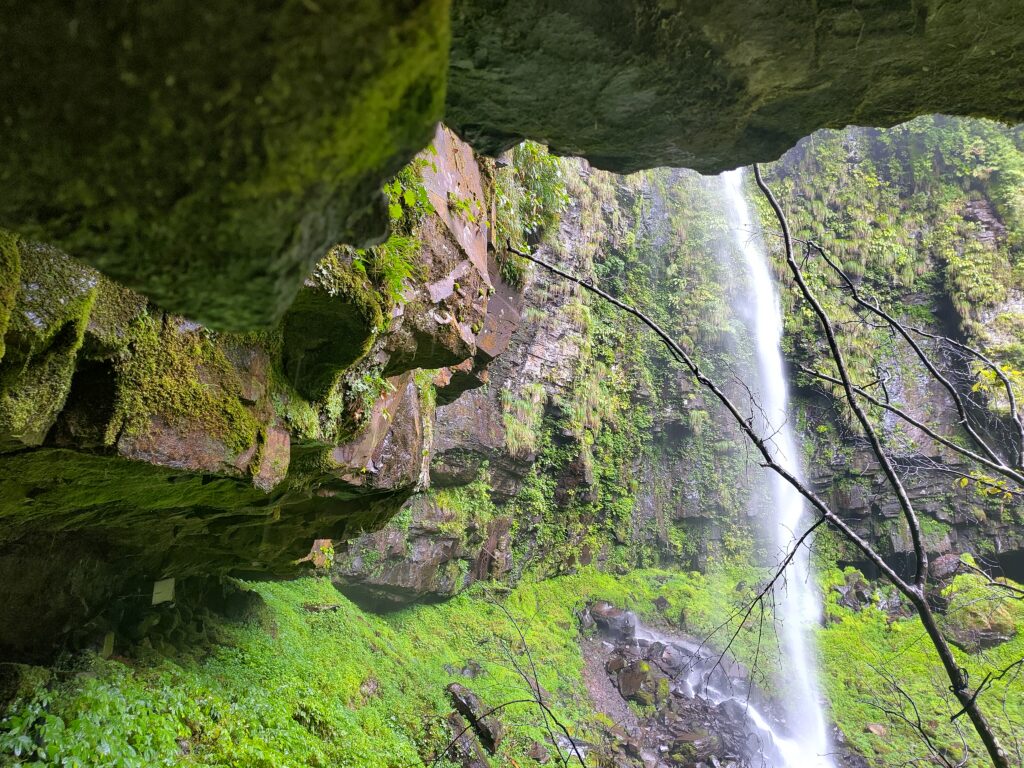
Stories of Miso and stores from friends (and the spf-Engine)
Miso is the traditional Japanese fermented soybean paste and one of the main reasons why I ended up again in Japan after a longer break, where I was busy with the building and moving of the Tofu factory, the creation of a new company, our zero-waste store, and certainly with my every-day business: revolution. It was mainly Ron-chan who led me here after we have been doing Miso for over six years now in Switzerland. Working with Koji and eating Miso everyday just feels super healthy and besides that it’s a century-old tradition in Japan. In one of my first weeks in Summer we drove to Nishio-City and went to a newly opened Cafe / Restaurant, run by friends of ours, such as Isshin-san’s wife. After a great coffee from a Marzocco-Machine we visited a small but old Miso-factory around the corner, behind this building, which is called hato miso (Pidgeon-Miso).
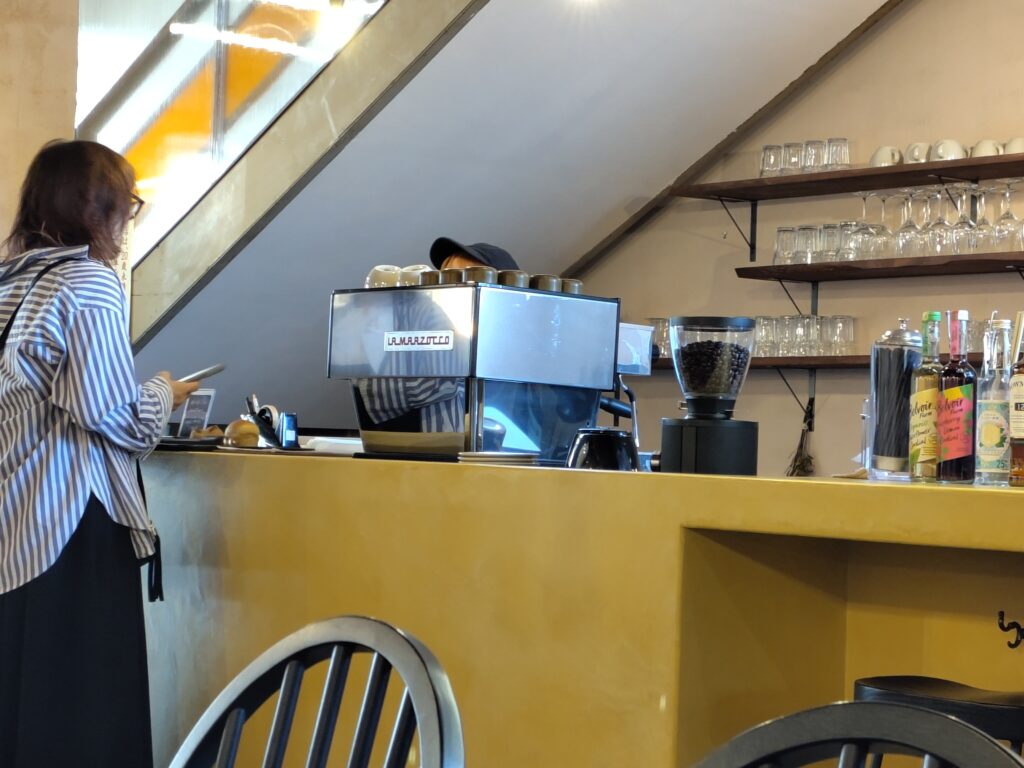



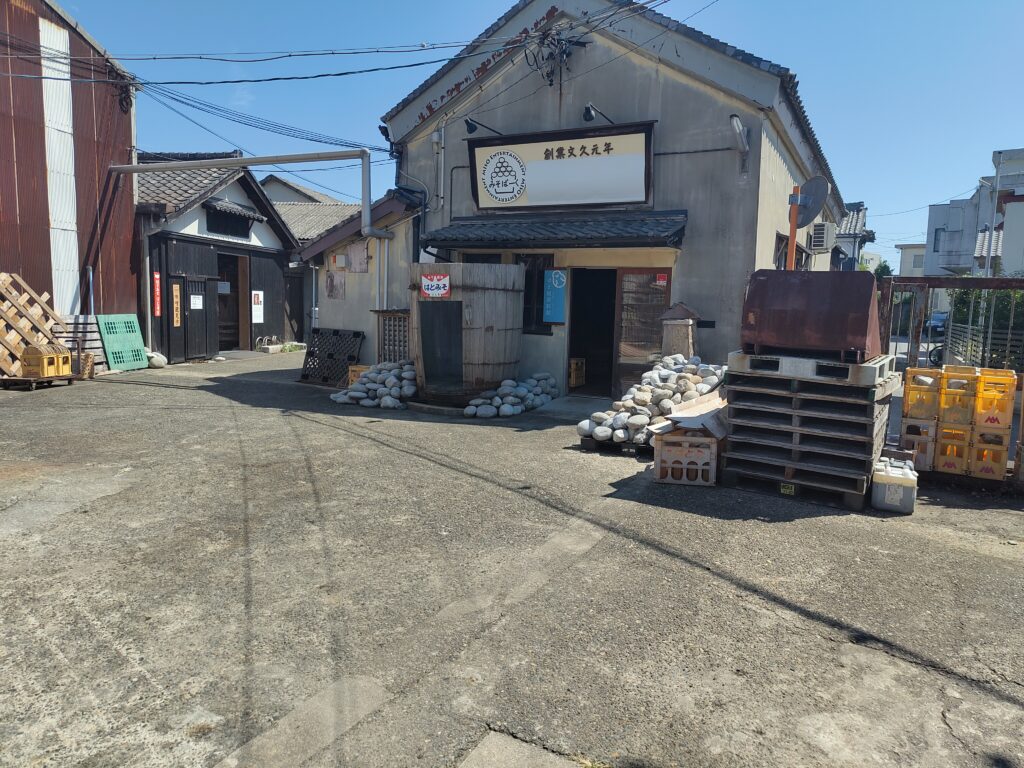
On the road to Nishio we also dropped by a coin laundry. A quite common phenomena in Japan. Many people don’t have access to a washing machine because they just rent a super small space or their only (big or real) place for hanging laundry is outside, which simply doesn’t work when it rains. Sometimes there would not only be a simple coin laundry with machines but a small corner with any establishment, such as a pop-up coffee-store. Nevertheless all too funny to not being mentioned, here some impressions of this space – where even Ninja’s can do their sneaky laundry…;)
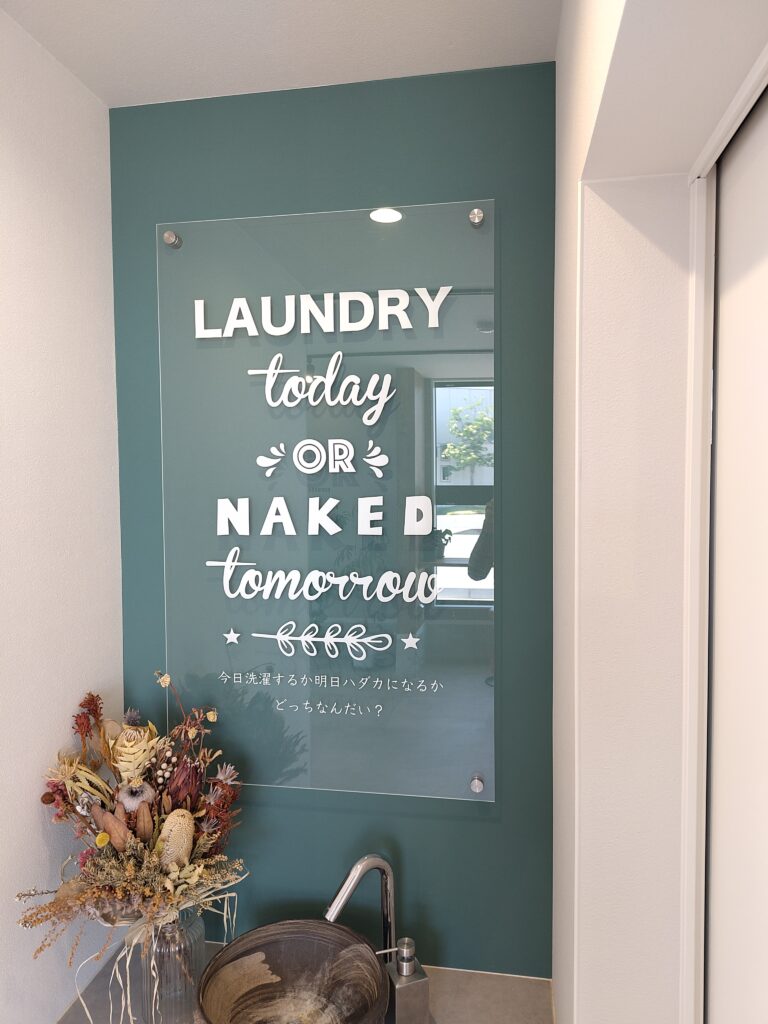
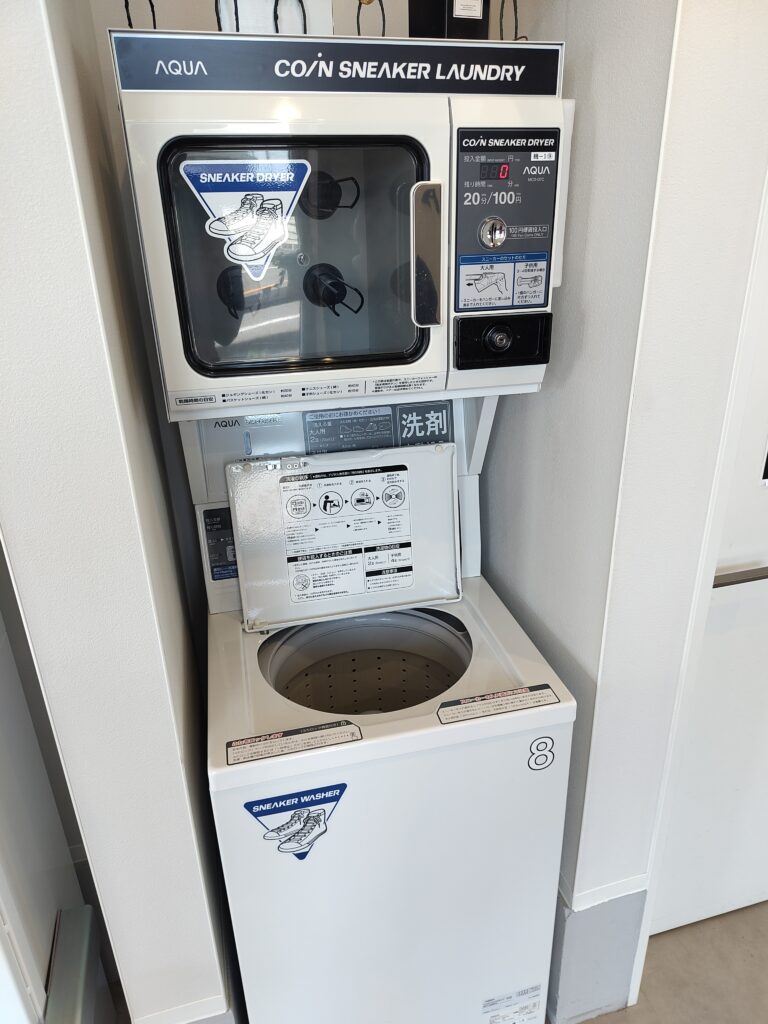
Back to Miso, which is something that is mainly or almost only done in Winter, the cold season. It’s a fermentation and it surely needs some basic temperature, but too high degrees are critical in the first phase. This is also why the Miso Workshop at Miyamoto-Kojiten take place from January to April. Nevertheless, we had some time, took the opportunity of being four people on a day and made a big amount of Miso. This was a good call, so Miyamoto-san and Tsuyopon could review their knowledge of the newly installed High-pressure-pot and show it to me – I rather call it spf-Engine: Steampunk-Fullthrottle-Engine;)

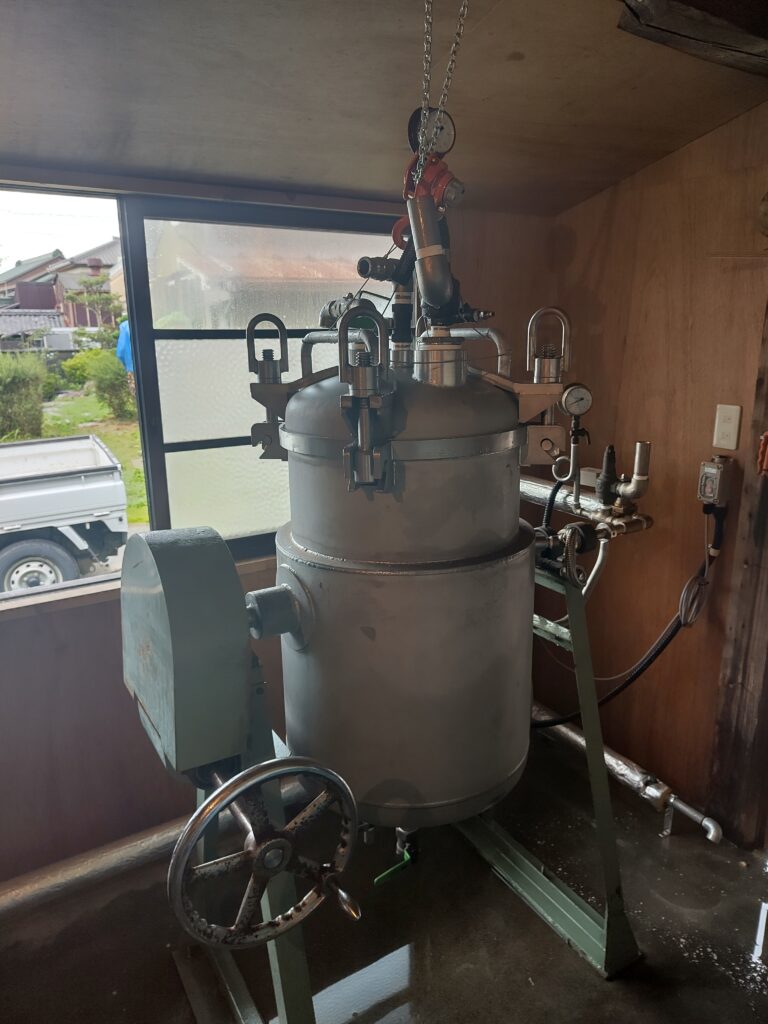

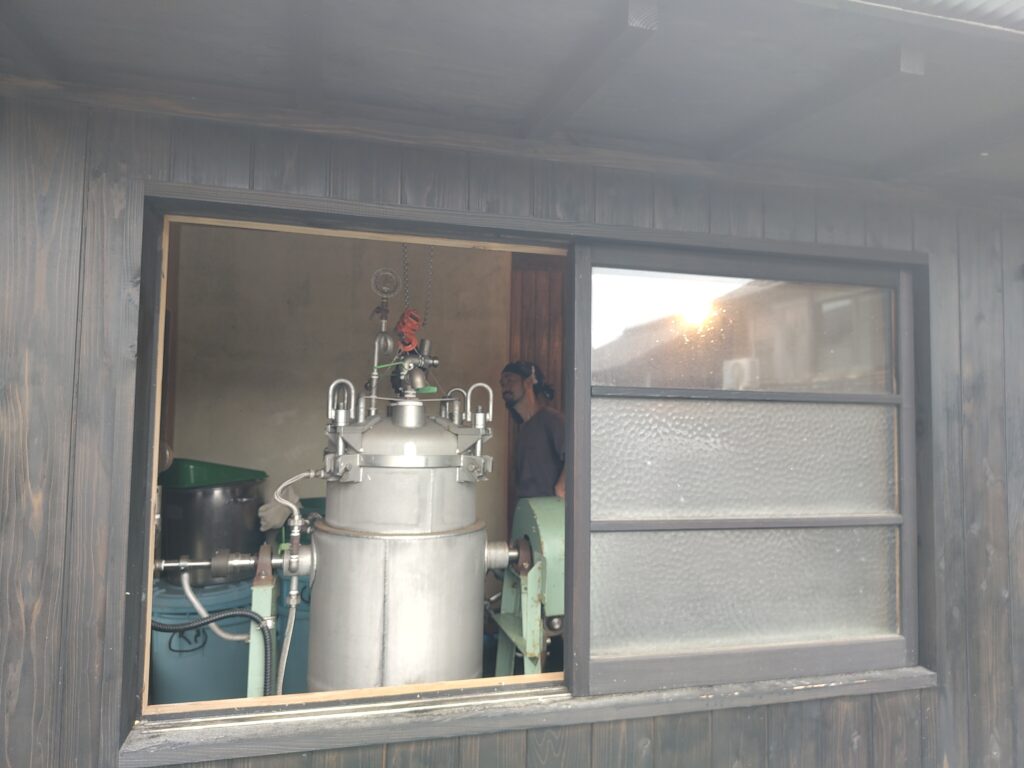



The cooked soybeans get squashed and then mashed together with Koji and salt, which has been kindly mixed beforehand. Once everything became one, it is put into a pot, barrel or any container. The most important thing is to press it firmly, so that no air is left, for the mould prefers to grow in these areas. For this reason the most common way when Miso doing by hand, is to form firm balls and to throw them into the container, pressing each layer on top of each other. When making bigger amounts you end up throwing bucket by bucket inside and spend more time pressing it down.

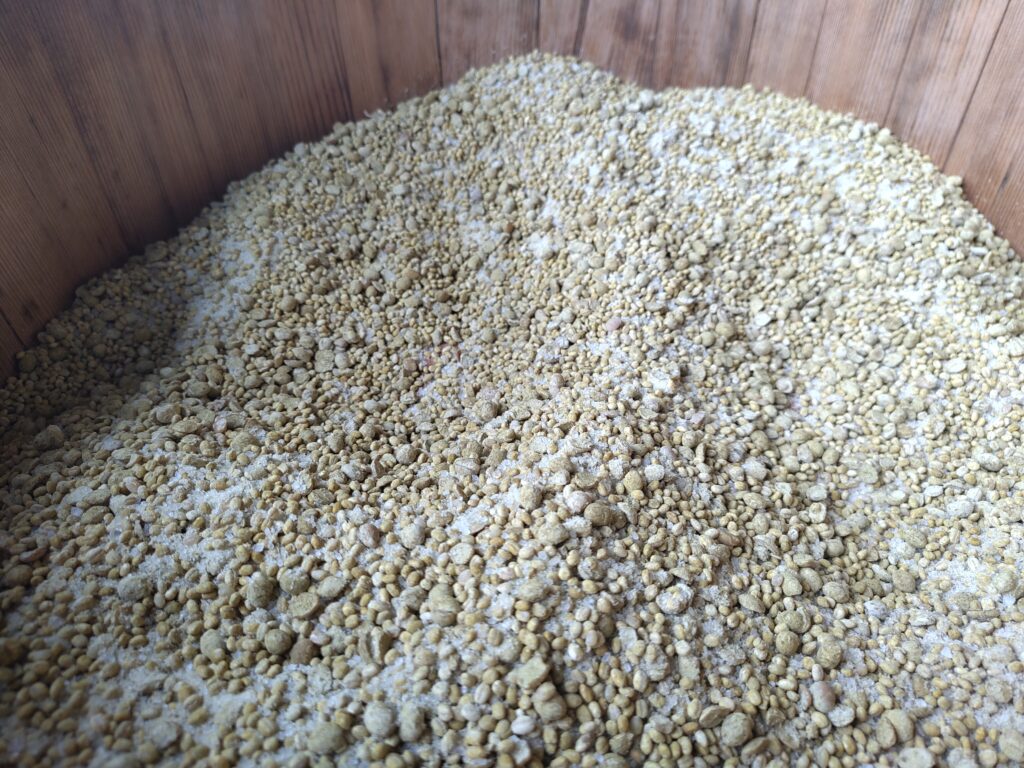
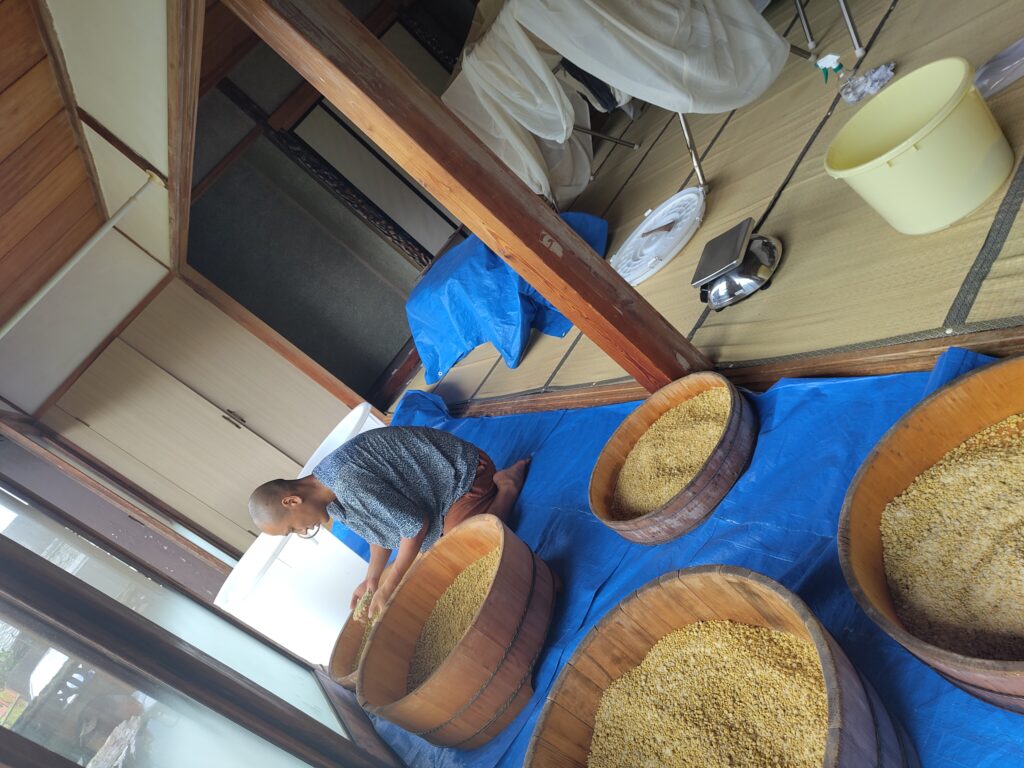


As mentioned earlier, we started to do bigger amounts at the Kojiten since more than a year, mainly for direct selling. This is still the future plan as well as we would love to purchase some bigger wooden barrels called kioke in Japanese, a very common now again uprising container in the shouyu business (soysauce). In old times this was the only way to go, it slowly disappeared and was replaced mainly by plastic containers (or concrete pools for soysauce). You can imagine that this newly uprising trend is bound to huge costs, for there are not a lot of craftsmen and places left with knowledge and capability to produce these astonishing barrels. So we applied for states subsidies, which is quite common in Japan, where the state is supporting traditional values and craftsmanship such as this.
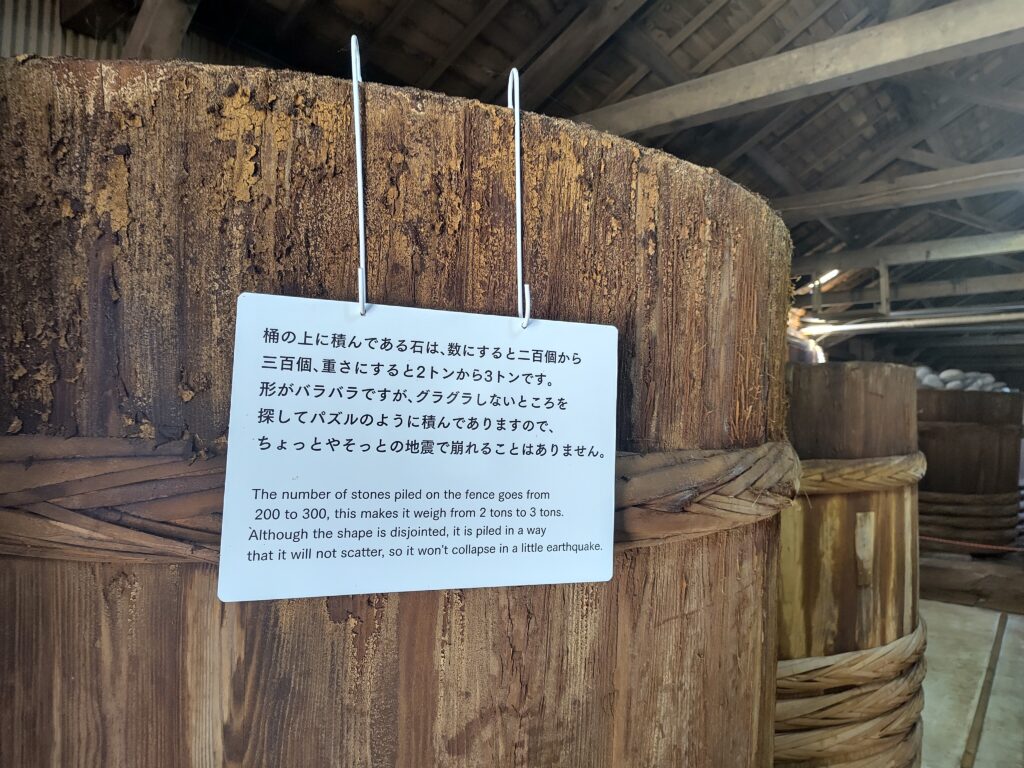
The Lost Lighter and A New Hope (or the Empire Strikes back…?)
If you now expected me to tell you the story of my lost Zippo’s, then your wrong. I just can tell you that I was somewhat naive – how I tend to be in life, which is by the way refreshing from time to time – and put my Zippo in my big travel luggage. No, not only one, the Studio-Ghibli-Princess-Mononoke one but also my second, a wonderful birthday gift by a dear friend, who once paid more attention to my life than I myself did.
Until now I always put the Zippo in this luggage but normally this would not be allowed, not any lighter. I think because of the no-pressure-chamber in the airplane, which basically doesn’t apply to a Zippo, but nevertheless it’s a lighter, yes. This was the first time I booked Air China and in Shanghai they were all to strict (or greedy?) and took it out of my luggage.
Whatever, I quite still talked a lot now, but what it is hidden and meant by the title and the story of my Zippo is been told by my dear travel companion Grogu (psst: click on his name for the link to his page).
Matsuri, Camping Gear and the different approach
We write the 3rd September of 2024, soon, after having finished writing this tentative paragraph, my website will go online for the first time. From this day forward I might not be working on it for quite some weeks, because I am about to leave Nishihazu for about 5 weeks. First I will be headed to Toyota (not the car, but the same-named city) to build up the festival hashi no shita, which stands for “under the bridge” and is indeed located directly under the bridge near Toyota Stadium.
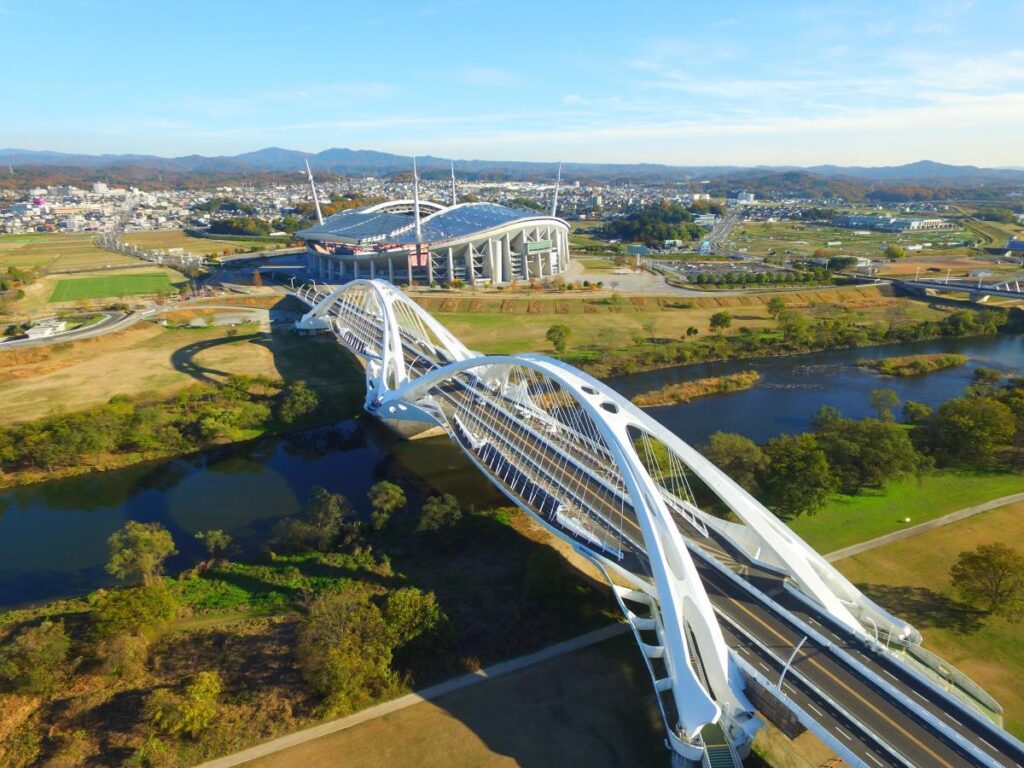
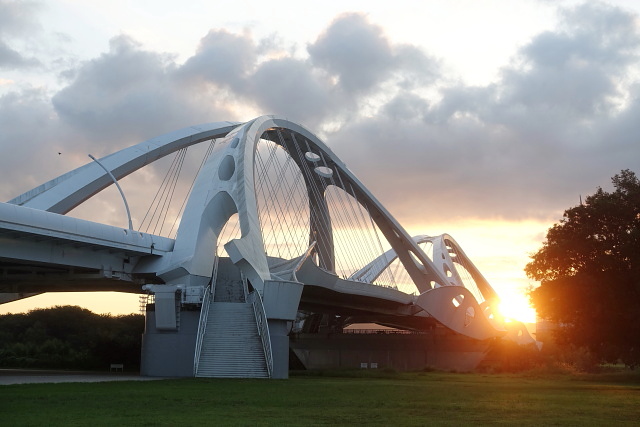
The festival is a cross-cultural Music Festival done and visited by crazy Hippie people and famous all over central Japan. I will finally meet many of my Tokyo friends there, make a lot of new friends and overly happy to connect to all these extraordinarily great people to build up a festival with them together. Here the homepage of them www.soulbeatasia.com and another impression of the festival. Much more, after I’ve been there;)
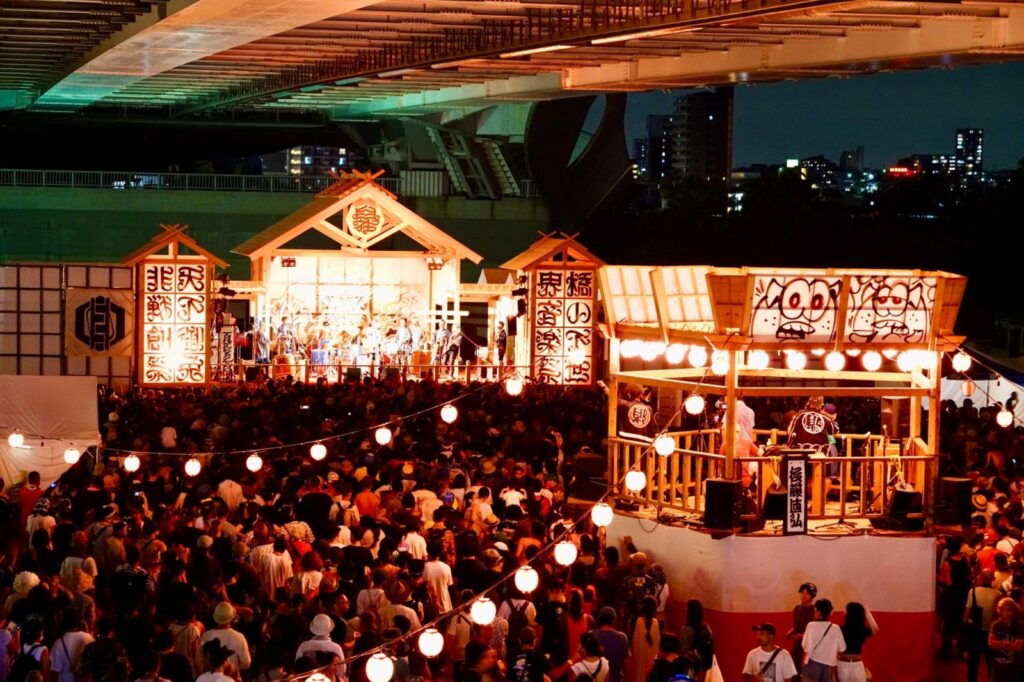
I bought and gathered a lot of camping gear in Japan here because first I didn’t want to bring everything from Switzerland, but second and much more fundamental: I simply almost don’t have any small camping gear, like a tent or a gas-cooker. Back in Switzerland I kinda had a different approach: I brought half the festival, I built up half the festival and I was half the festival – meaning that I mostly wouldn’t even come to rest and if there would be a tiny window of time, I would straightforward head to the dance floor or enjoy myself as much as possible. If I would sleep, it would between the rice-bags or kitchen equipment or simply in the storage place or tent underneath our decoration objects;) This time, let’s try a different and maybe slower approach. And let’s build a tent, cook a soup over a tiny gas-burner in a 0.5 liter pot (not a 500 liter pot) and enjoy the stars from the hammock.


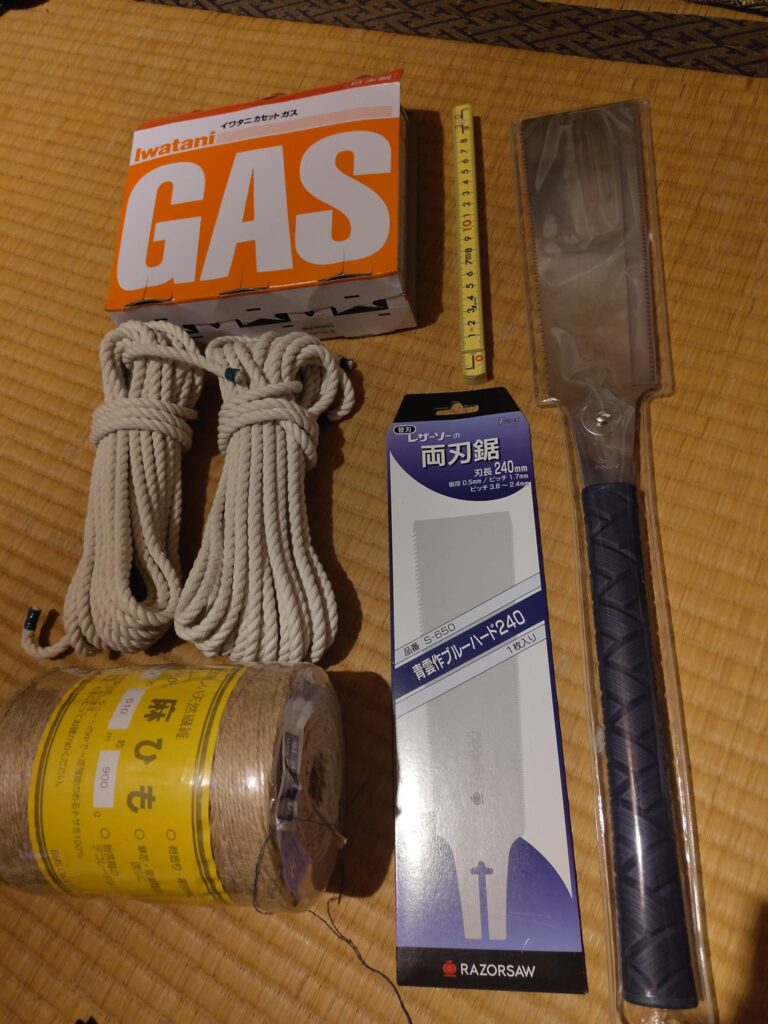
Still I brought some stuff and some tools and guess what, Japanese people all work with the tape measure, this rolling thing and don’t know the folding type, which is the most common in Switzerland. Still I managed to get one and look at this: 1m, not 2m, only one. Maybe it’s enough? Maybe it’s because anyway everything is smaller and tiny here? hehe;) Joke aside, I am really looking forward and just after writing this I gotta finish my leather pockets for the festivals, including the tool-keeper.
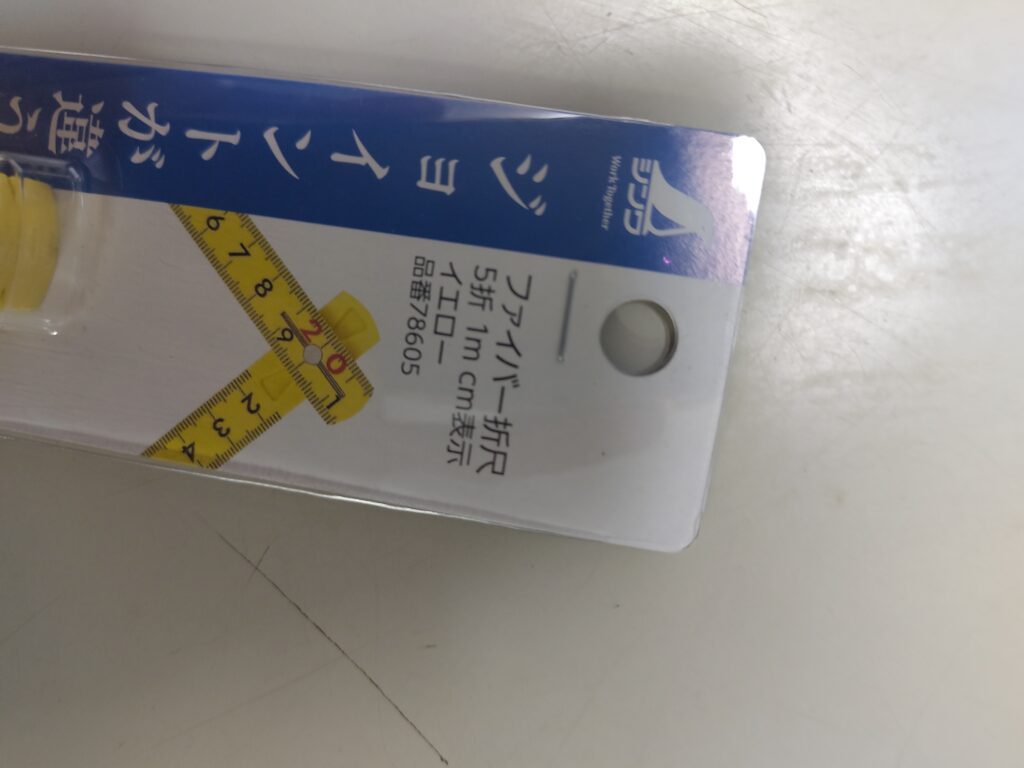
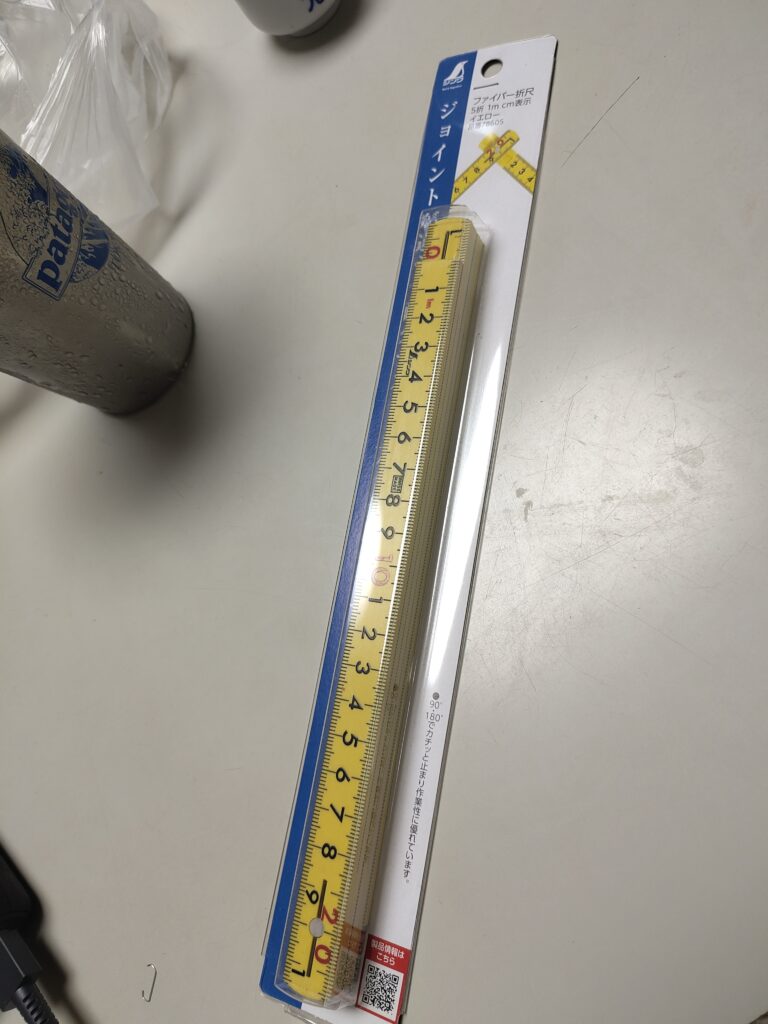
After helping two days to build down the festival I will have to leave the Hashinoshita-Crew, because I shortly pass one night by home and then instantly will leave for Tokyo to the outer West region Ome to help build up the next festival, which will be a Psytrance festival, done by a very lovely spirited group I met last spring in Tokyo. They usually run this very small space named Koenji-Cave in the same-named city part of Tokyo. I am greatly looking forward and so thankful having met these people and overly glad to join their festival as well. It will take place near the living area of Tsuyoshi Suzuki I got to know in spring as well and I can’t wait to dance the whole nights!
After the second festival is done, I will be headed into the city to finally meet all of my Tokyo friends and spend around two weeks there, I am as well excited for that and also here unspeakably thankful to all these great people cherishing our friendship so much and still believing into revolution and hoping that our sparks ignites the flame of change!
All my dear friends, my nearest ones, readers and everyone struggling in this world: I believe in you and never, please never forget: you are all extraordinary people! Take care;)
LOVE.PEACE.REBELLION – to be continued…


